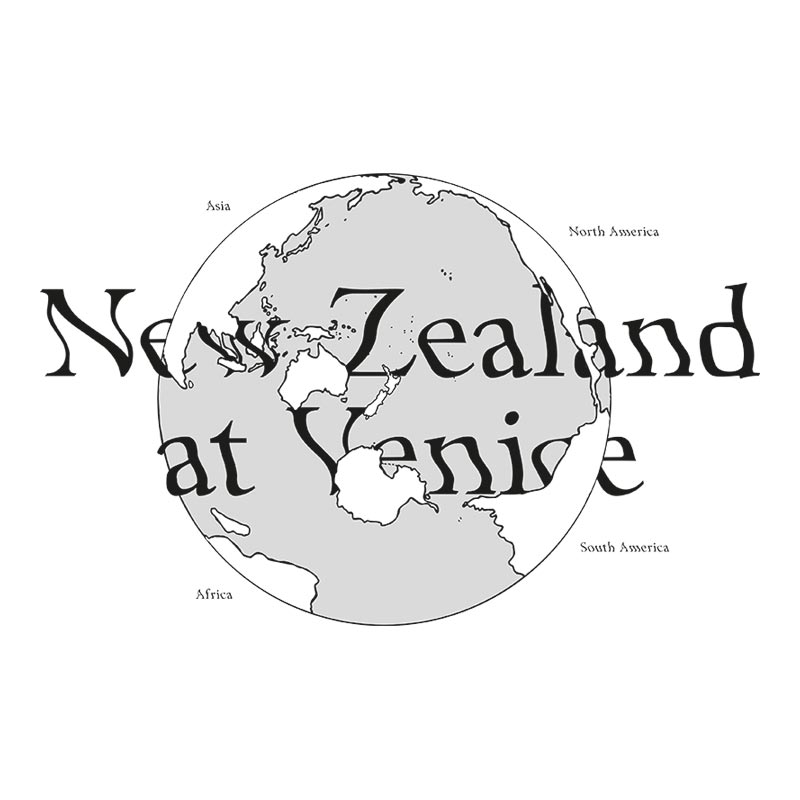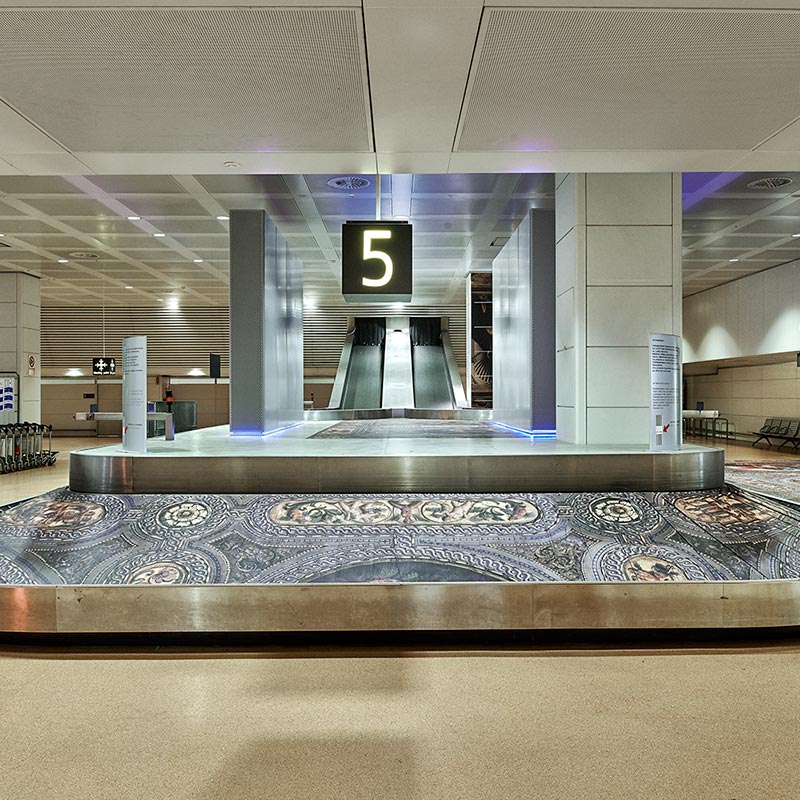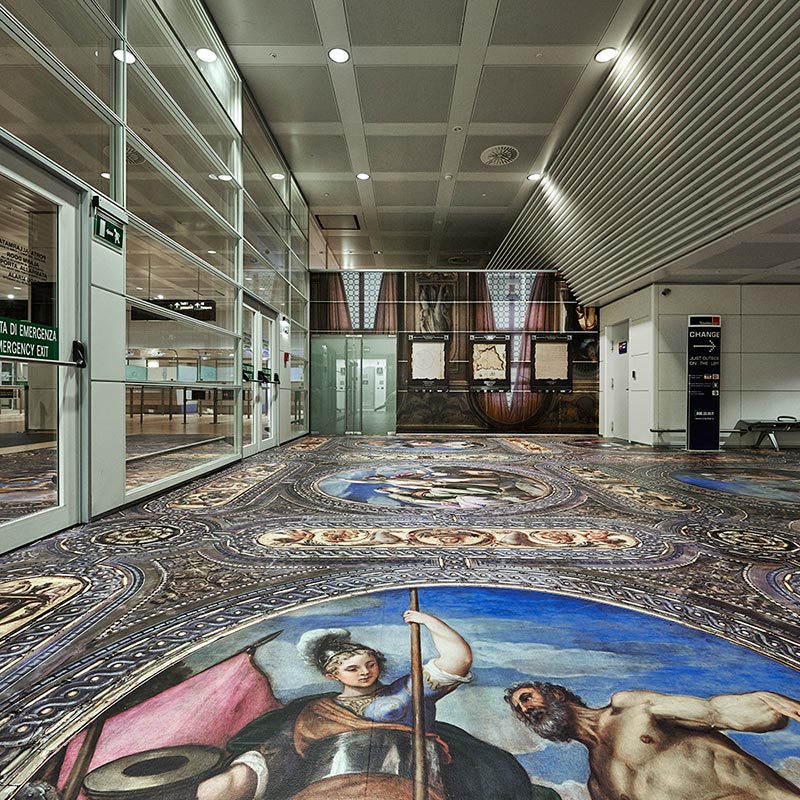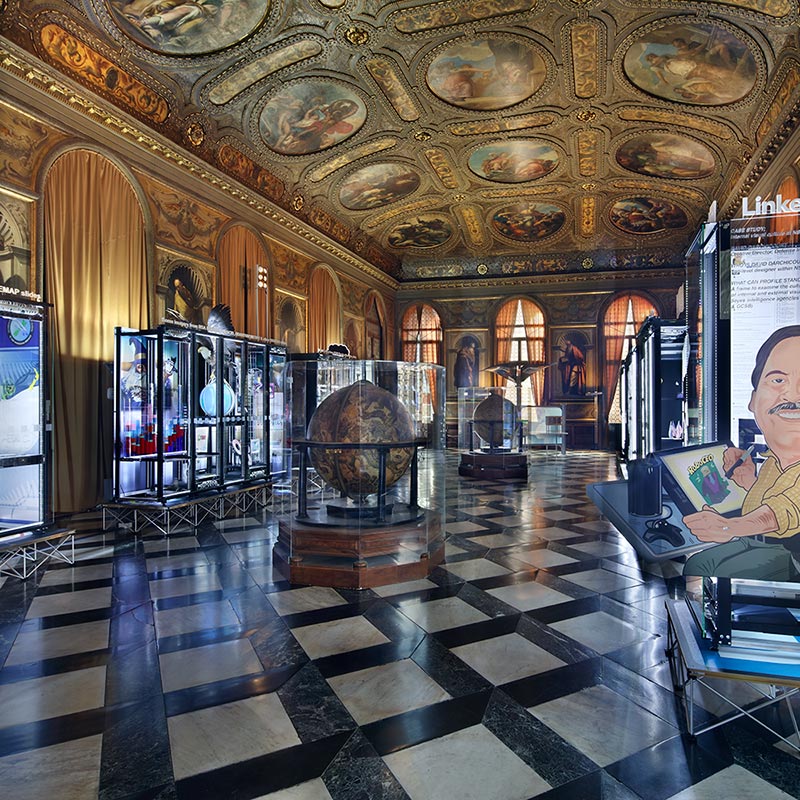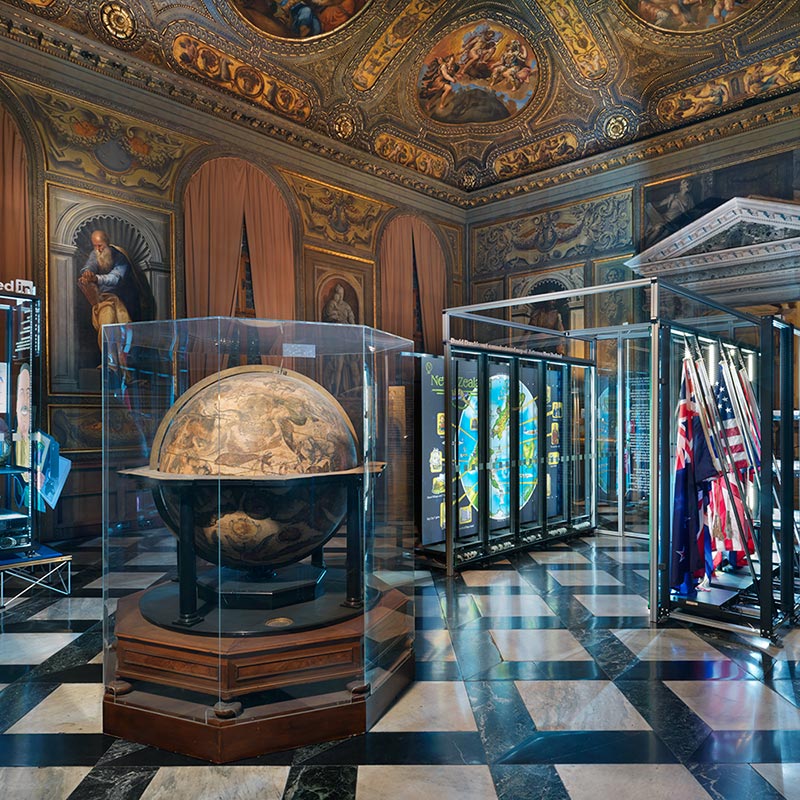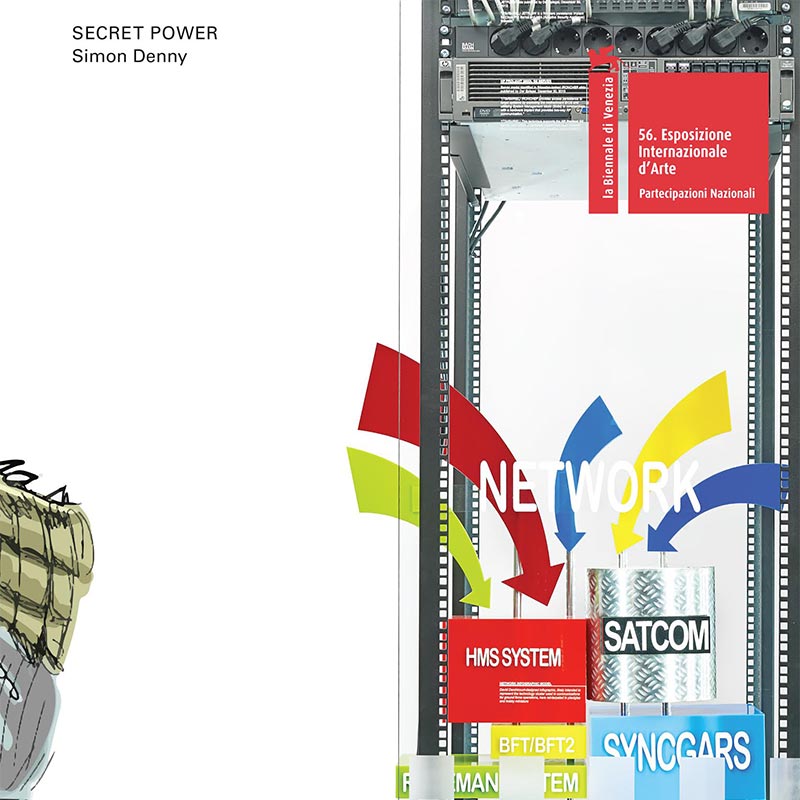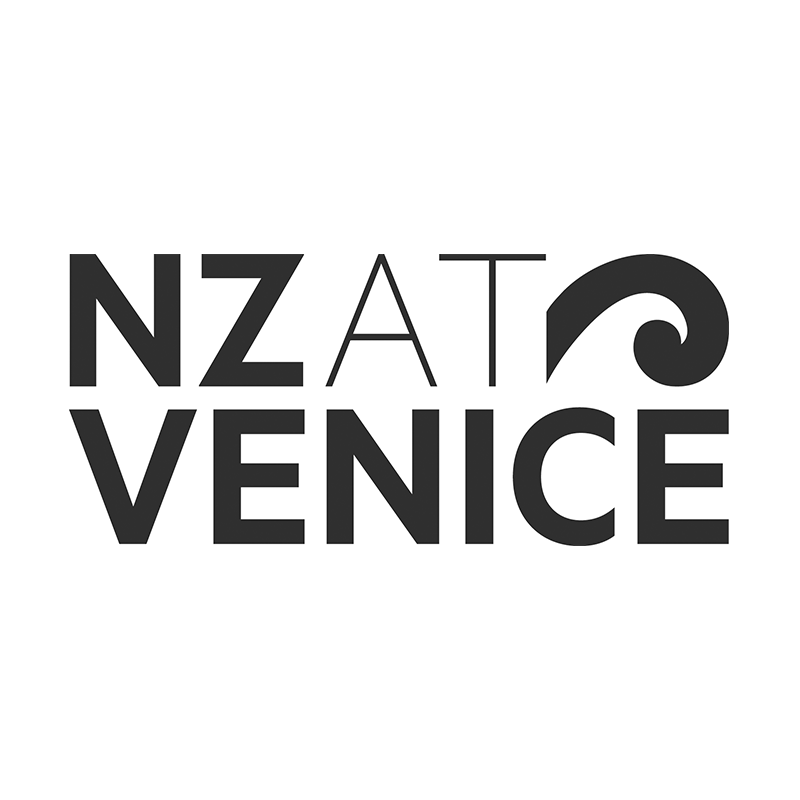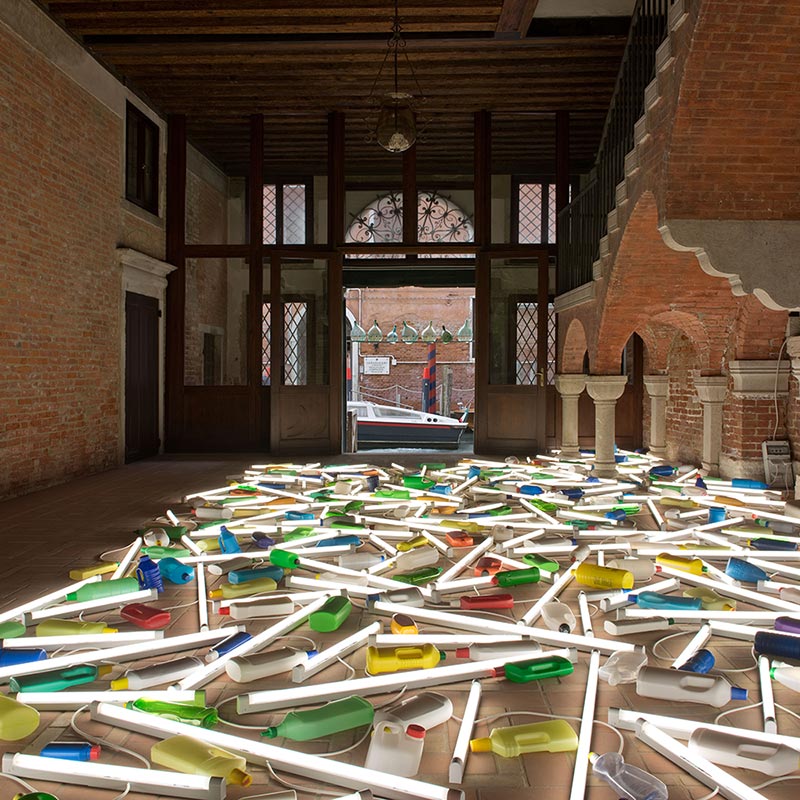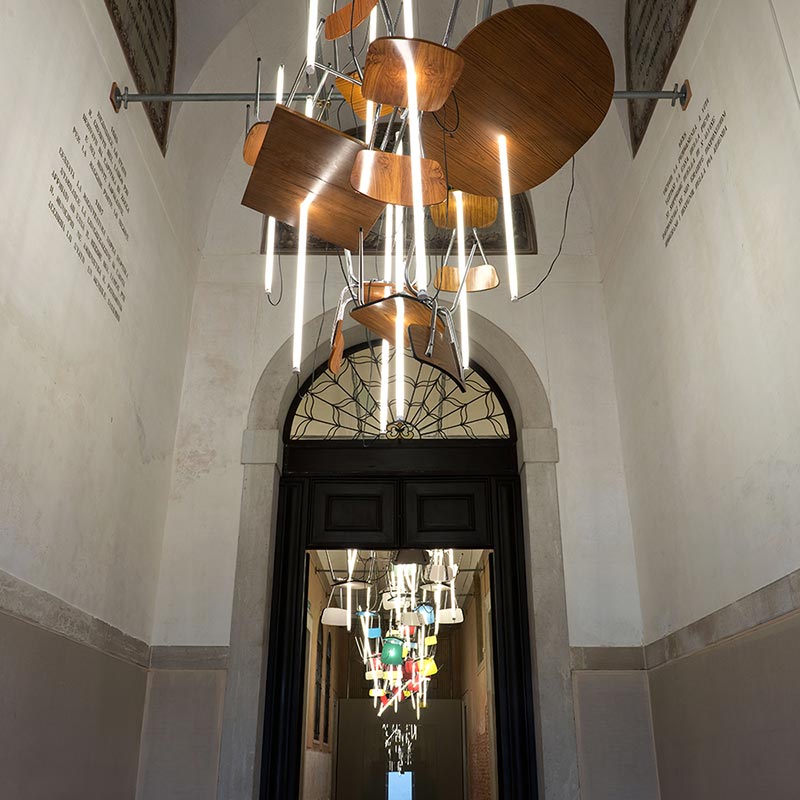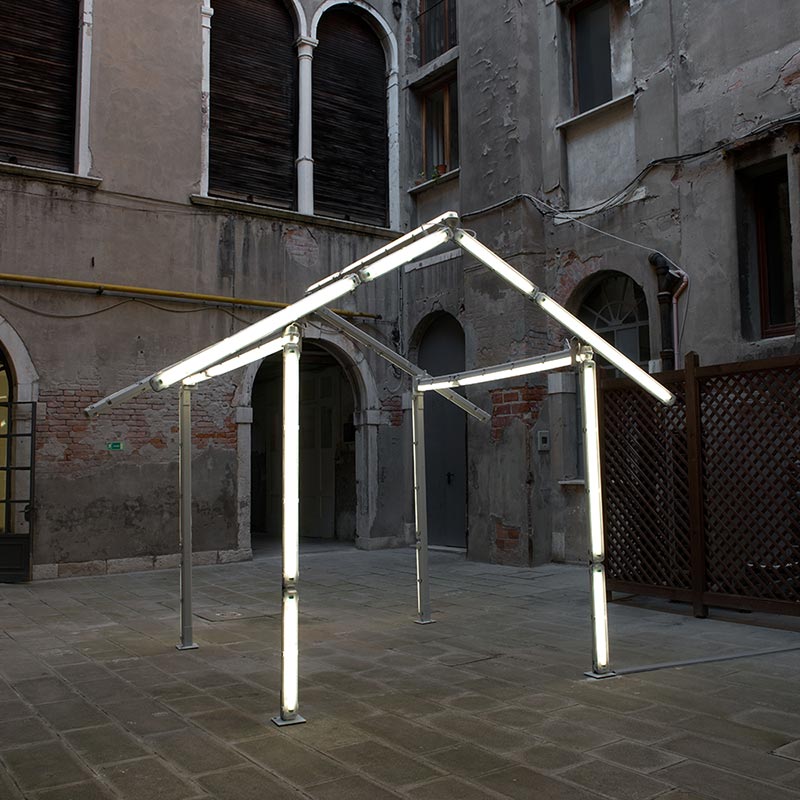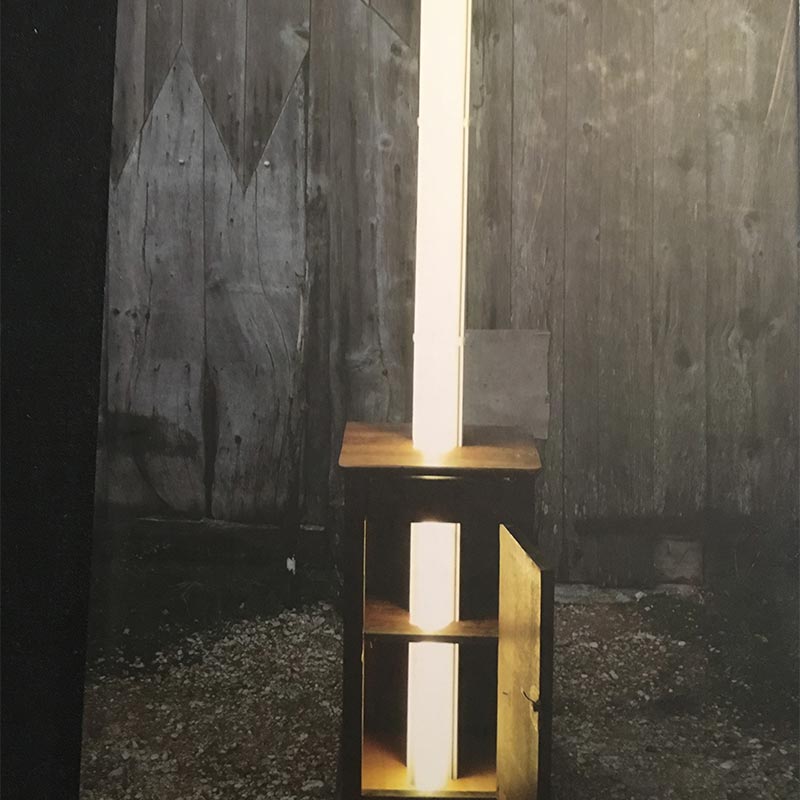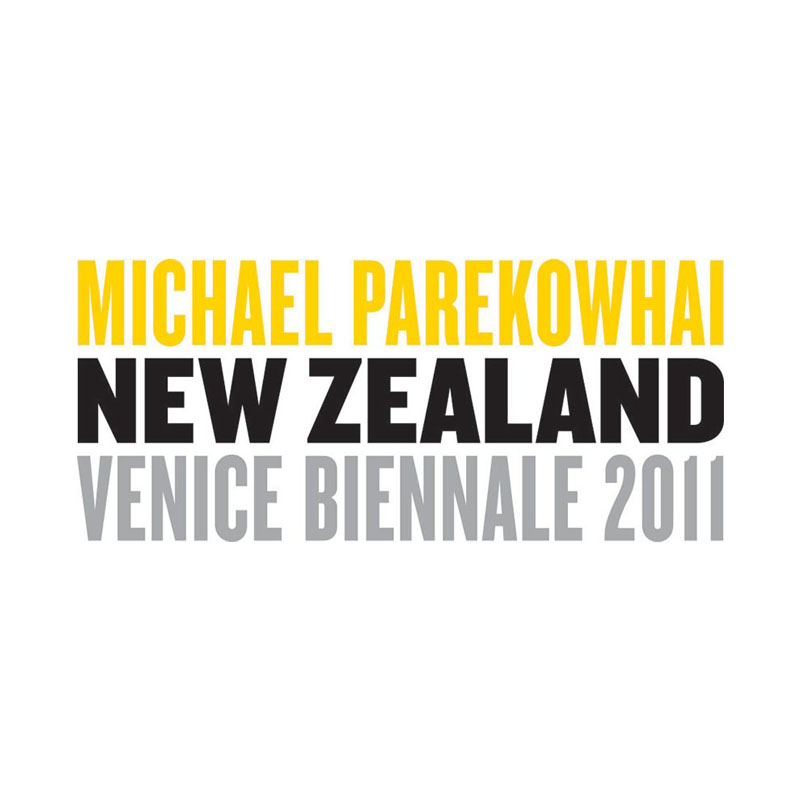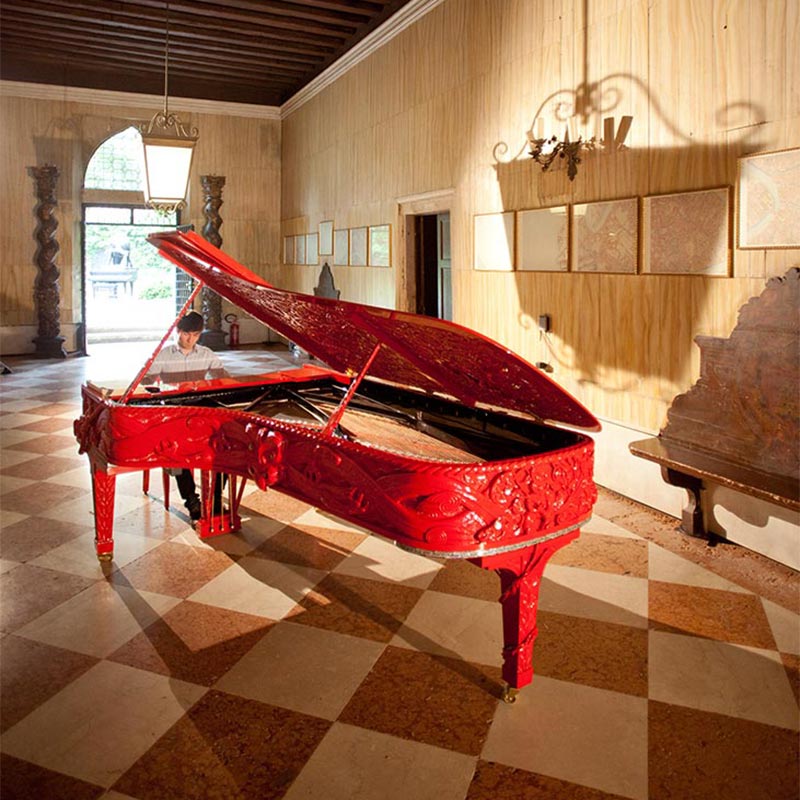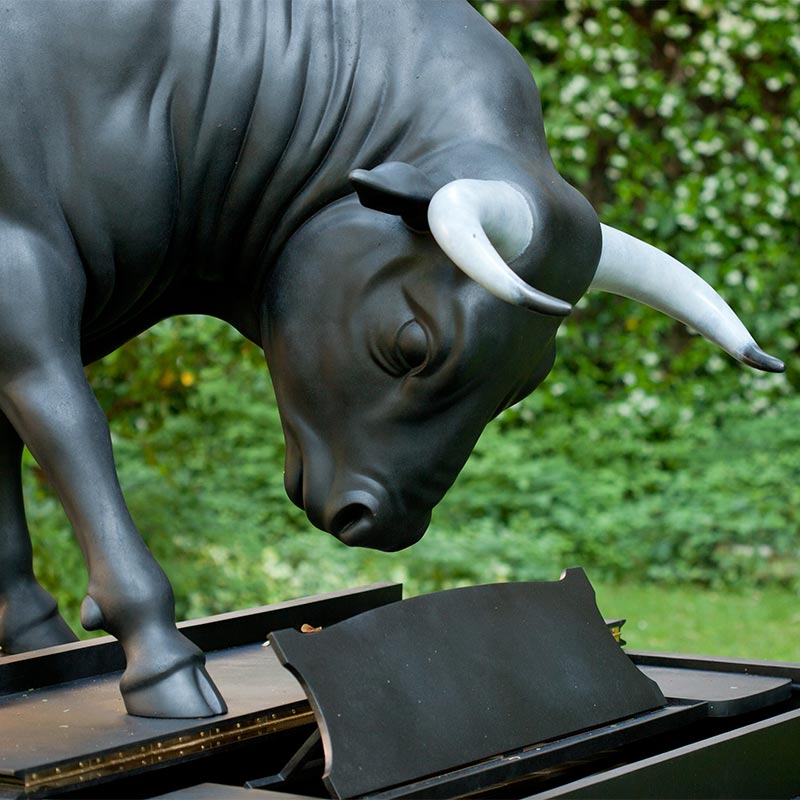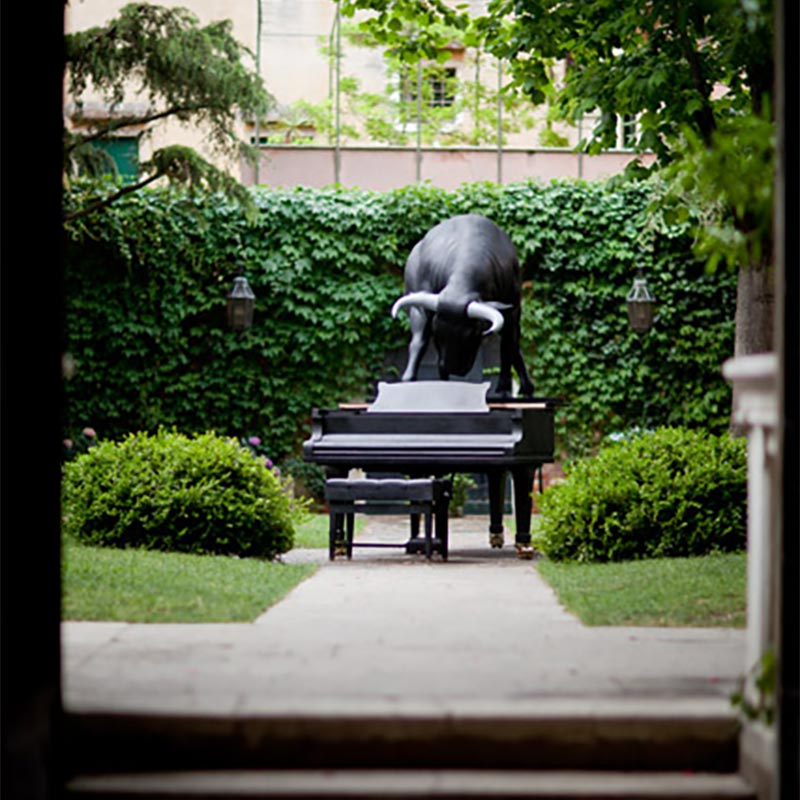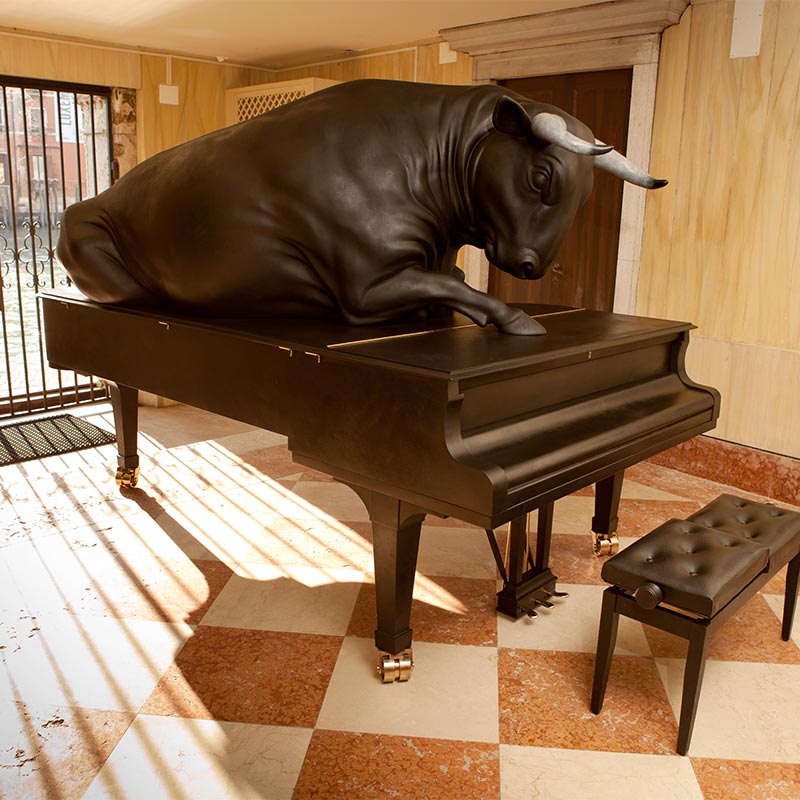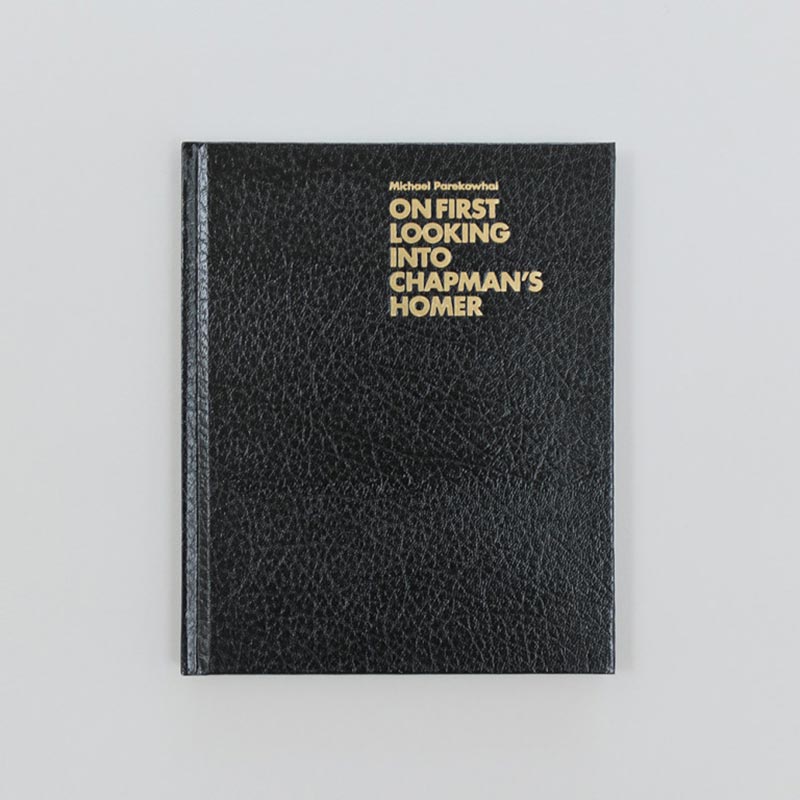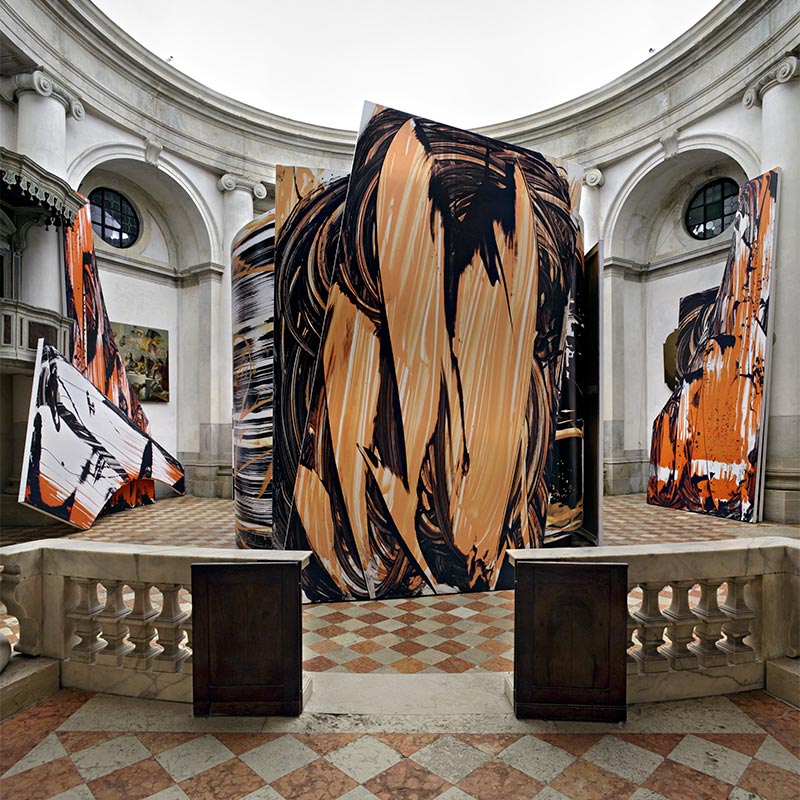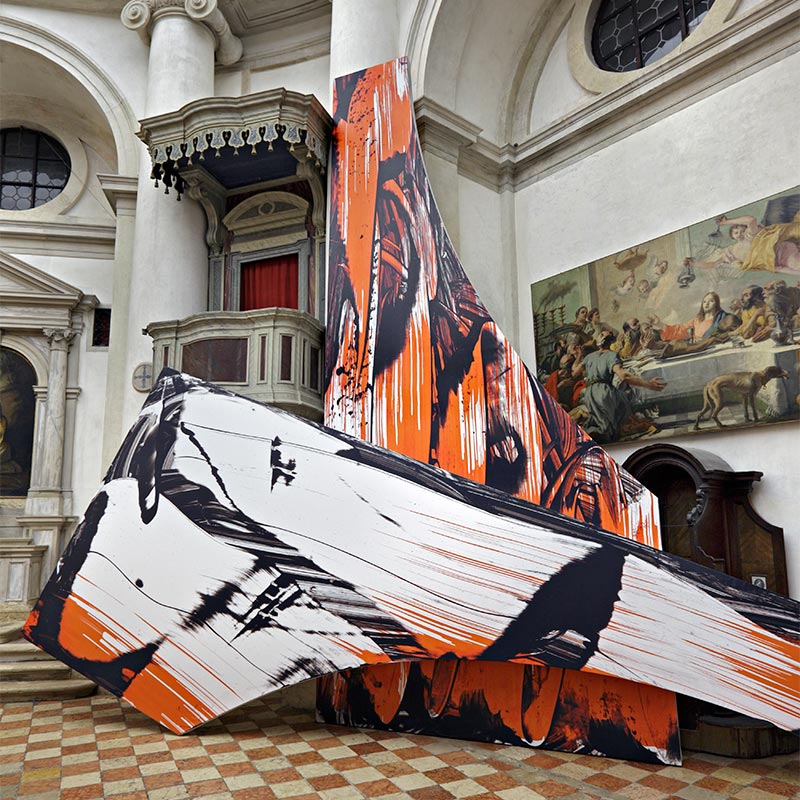History of New Zealand at Venice
New Zealand has exhibited at la Biennale di Venezia since 2001, leading to greater national and international profile and opportunities for all of the participating artists. La Biennale di Venezia is widely recognised as the world’s pre-eminent contemporary art exhibition. In 2019 almost 90 countries had a presence and more than 5,000 accredited journalists and 600,000 visitors attended.
An official presence brings New Zealand contemporary art to the attention of global media, art institutions, experts and gallerists and offers professional development opportunities for the curators, exhibition attendants and team members including the technical, design and artistic contributors to the project.
New Zealand’s arts development agency, Creative New Zealand, funds and manages New Zealand’s presence at la Biennale di Venezia for the almost seven month duration. Additional supporters include public galleries and museums, sponsors, artists’ gallerists, and the broader arts community. The New Zealand at Venice patrons generously contribute around a third of the budget for New Zealand’s project.
A new venue is chosen for each exhibition as New Zealand does not maintain a permanent national pavilion in Venice.
2023 - Yuki Kihara
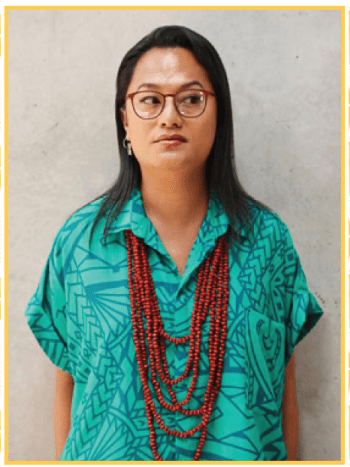
Yuki Kihara
Core Team Members
Commissioner: Caren Rangi ONZM
Curator: Natalie King OAM
Assistant Pasifika Curator: Ioana Gordon-Smith
Project Director: Jude Chambers
Project Publication
Yuki Kihara Paradise Camp
Editor: Natalie King
Contributing writers: Yuki Kihara,
Natalie King OAM, Elizabeth Childs,
Patrick Flores, Coco Fusco, Ioana
Gordon-Smith, Jacqueline Lo, Can
Taulapapa McMullin, Reverend
Ruperake Petaia, Daniel Michael
Satele, Chantal Spitz, Ngahuia Te
Awekotuku PhD FAWMM MNZM,
Fanny Wonu Veys
Copy editor: Nikki Lusk
Design: Ashlea O’Neill, Salt Camp Studio
Publisher: Thames & Hudson Ltd
Paradise Camp comprises a suite of twelve tableau photographs in saturated colour, situated against a vast wallpaper of a landscape decimated by the 2009 tsunami. Eleven of the works were shot on location in Sāmoa, from rural villages to churches, plantations and heritage sites, with a local cast and crew of over eighty people.
Kihara’s performative photography upcycles select paintings by post-impressionist French artist Paul Gauguin in a suite of images that repurpose his paintings created during his time in the Islands of Tahiti and the Marquesas between 1891 and 1903. Kihara problematises Gauguin’s outsized legacy by re-enacting his paintings back in the Pacific, paying careful attention to the details of his works. These re-enactments instill a Polynesian inflection to each photograph and are based on strong personal relationships with Kihara’s sitters, all of whom are part of the Fa‘afafine and Fa‘atama communities. Kihara works with these models to represent her own vision of Paradise, redirecting the viewer to the concerns of contemporary Pacific Islanders and ‘returning the gaze’ in a profound gesture of empowerment.
More on the artist
An interdisciplinary artist of Japanese and Sāmoan descent, Yuki Kihara’s work interrogates and dismantles gender roles, (mis)representation and colonial legacies in the Pacific. She was the first Pasifika, Asian and Fa’afafine (Sāmoa’s ‘third gender’) artist to represent Aotearoa New Zealand at la Biennale di Venezia.
Kihara’s performative photography upcycles select paintings by post-impressionist French artist Paul Gauguin created during his time in the Islands of Tahiti and the Marquesas between 1891 and 1903. Kihara problematises Gauguin’s outsized legacy by re-enacting his paintings back in the Pacific, paying careful attention to the details of his works. These re-enactments instill a Polynesian inflection to each photograph and are based on strong personal relationships with Kihara’s sitters, all of whom are part of the Fa‘afafine and Fa‘atama communities. Kihara works with these models to represent her own vision of paradise, redirecting the viewer to the concerns of contemporary Pacific Islanders and ‘returning the gaze’ in a profound gesture of empowerment.
2019 - Dane Mitchell
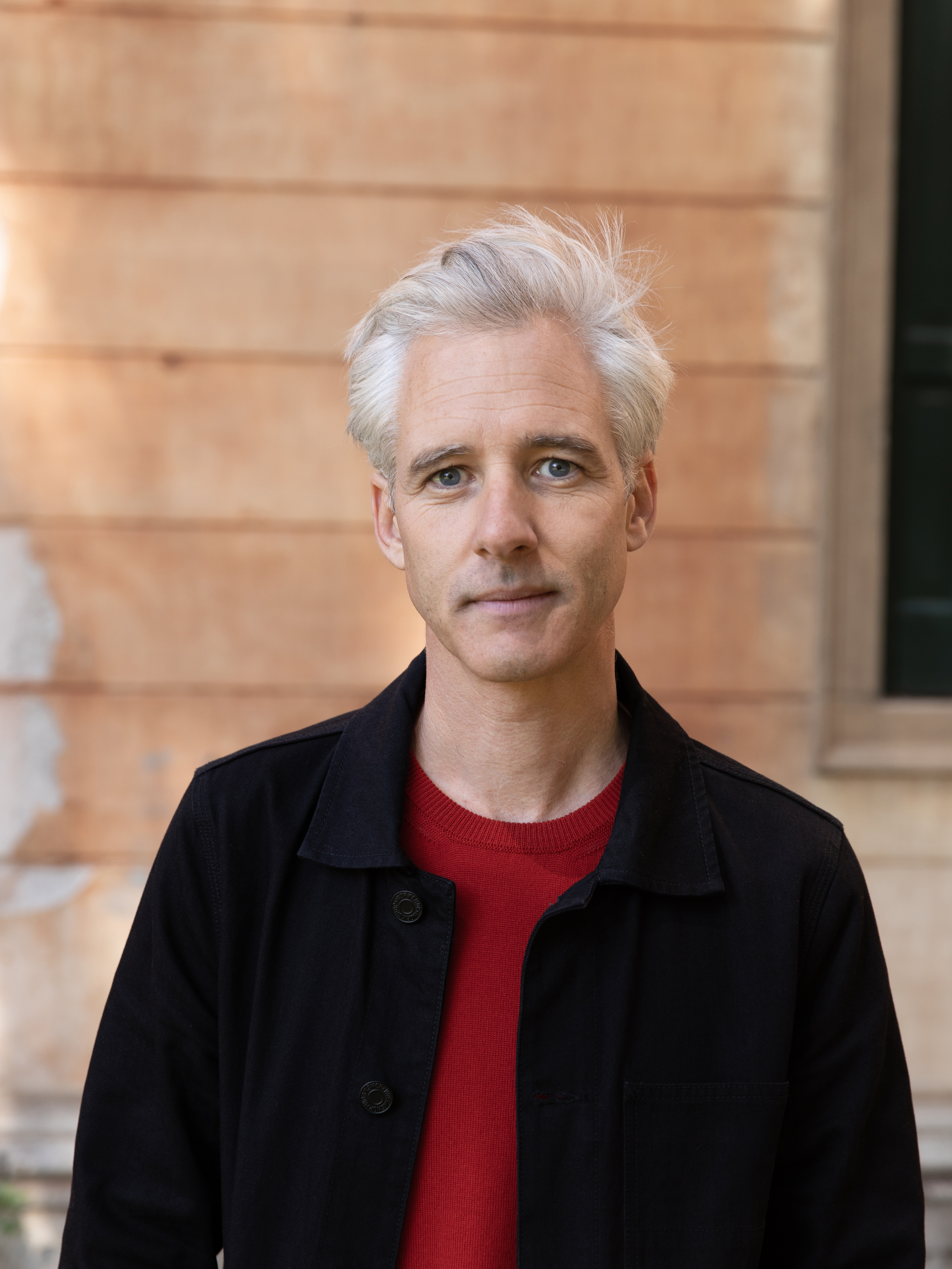
Dane Mitchell (Artist) Post hoc, 2018-19. Courtesy of the artist.
Core Team Members
Commissioner: Dame Jenny Gibbs
Lead Curator: Dr Zara Stanhope
Project Curator: Chris Sharp
Project Director: Jude Chambers
Exhibition Attendants
Hope Wilson, Benny Chan, James Hope, Moya Lawson, Brook Konia & Erin McFarlane
Project Publication Dane Mitchell: Post Hoc
Editors: Dr Zara Stanhope & Chris Sharp
Contributing writers: Dr Stephen Turner, Heman Chong
Editorial: Clare McIntosh
Publication management: Studio Akin & Mousse Publishing
Designer: Tana Mitchell & Emma Kaniuk - Studio Akin
Publisher: Mousse Publishing
At the heart of Dane Mitchell’s Post hoc, are 260 meticulously researched lists of countless phenomena that existed, but are now no more.
From the New Zealand Pavilion, Post hoc broadcasted a mournful archive numbering in the millions across the city, via seven, six-metre tall cell-phone tree towers installed in public sites around Venice. The source of the automated voice was an echo-free chamber installed in the Palazzina Canonica, the former headquarters of exhibition partner Istituto di Scienze Marine (CNR-ISMAR).
These extinct, disappeared, obsolete, withdrawn and absent things were transmitted continuously throughout the duration of the Biennale. To be heard in their entirety required hearing 15,000 words a day, over 176 days, 8 hours a day.
Simultaneously, the lists could also be listened to at trees in four public sites: Università Iuav di Venezia, The Architecture School; Ospedale Civile di Venezia, The Hospital; Sant’Elena, Parco Rimembranze; and the North Arsenale, Internal Garden. At any of the tree towers, a list could be selected and streamed on a handheld device when within the field of each tree’s wifi network.
Coinciding with the audible component, the immaterial lists found tangible form in the Palazzina’s emptied library, where lines of text printed on rolls of paper in sync with the transmissions, slowly filling the space over the six-month duration of the Biennale.
A Latin phrase, ‘Post hoc’ translates as ‘after this’. It describes the assumption that an occurrence has a logical relationship with the event it follows. In Mitchell’s presentation, Post hoc evoked the question of the connections between events and vanished ‘past things’, without necessarily calling up judgement.
Post hoc was generously supported by our partners and sponsors: Te Papa Tongarewa, Leigh Melville and the New Zealand at Venice Patrons, Anthony Simpson, New Zealand Ambassador to Italy and the New Zealand Embassy in Rome, exhibition partner Institute of Marine Sciences of the National Research Council of Italy (CNR-ISMAR), Akin, Man o’ war, and Hopkinson Mossman.
Elements of Post hoc will be presented at Christchurch Art Gallery in 2020.
More on the artist
Dane Mitchell’s practice is concerned with the physical properties of the intangible and visible manifestations of other dimensions. His work teases out the potential for objects and ideas to appear and disappear, and our ability to perceive or imagine transfiguration. His practice evokes a connection between the sensual and the conscious. It speculates on what is material and explores systems of knowledge or belief and people’s experiences of them.
Dane has an extensive national and international exhibition history, including participation in a number of biennales across Australia, Europe, the United Kingdom and Asia, including Thailand’s first Biennale, Krabi. He has held solo exhibitions at Mori Art Museum, Tokyo and Institut d’Art Contemporain, Viilleurbane/Lyon; as well as participated in a citywide project in Belgium, PLAY Kortrijk. In 2019 Dane held solo exhibitions at Auckland Art Gallery, Auckland; Hopkinson Mossman, Wellington; and Château de Rentilly, Bussy-Saint-Martin, France.
2017 - Lisa Reihana
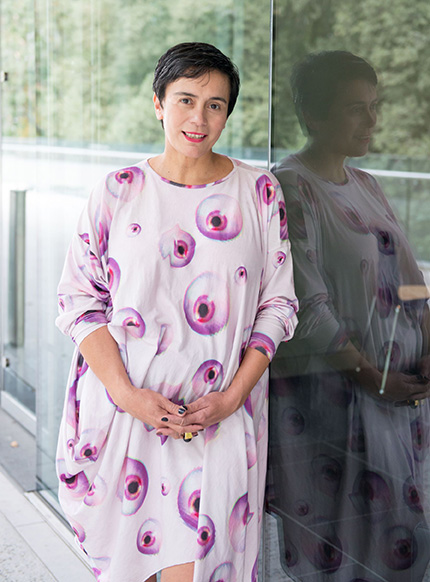
Lisa Reihana. Photo: John McIver.
Core Team Members
Commissioner: Alastair Carruthers
CNZM Curator: Rhana Devenport
Project Director: Jude Chambers
Exhibition Attendants
Talei Si‘ilata, Jaenine Parkinson, Zoe Hoeberigs, Julia Craig, Hannah Murray, Claire Chamberlain
Project Publication Lisa Reihana: Emissaries
Director and commissioning editor: Rhana Devenport
Contributing writers: Witi Ihimaera, Rhana Devonport, Nikos Papastergiadis, Anne Salmond, Jens Hoffmann, Brook Andrew, Vivienne Webb, Keith Moore, Megan Tamati-Quennell
Editor: Clare McIntosh
Publication management: Catherine Hammond
Designer: Philip Kelly Studio
Publisher: Auckland Art Gallery Toi o Tāmaki
Lisa Reihana’s exhibition for the Biennale Arte 2017 returned imperialism’s gaze with a speculative twist that disrupted notions of beauty, authenticity, history and myth.
Lisa Reihana: Emissaries unravelled Enlightenment ideals, cartographic and scientific endeavour, and the raw, ever-present impulses of expansionism, power and desire. Presented in the Arsenale’s Tese dell’Isolotto, the exhibition featured the artist’s vast panoramic video in Pursuit of Venus [infected], 2015—17, alongside interrelated photo-based and sculptural works.
in Pursuit of Venus [infected] is a cinematic re-imagining of the French scenic wallpaper Les Sauvages De La Mer Pacifique, 1804—1805, also known as ‘Captain Cook’s voyages’. Two hundred years later – and almost 250 years after the original voyages that inspired them – Reihana employed twenty-first century digital technologies to recast and reconsider the wallpaper from a Pacific perspective.
Reihana presented portraits of two key figures from in Pursuit of Venus [infected] as emissaries: the Chief Mourner from the Society Islands who moves between worlds, and Joseph Banks, the ambitious naturalist/astronomer who documented the Transit of Venus on Cook’s first voyage. A constellation of sculptural works literally telescoped in on moments of encounter and wonder.
Generously supported by: Te Papa Tongarewa (key partner), Auckland Art Gallery (presenting partner), Leigh Melville and the New Zealand at Venice Patrons, Allpress Espresso (supporting sponsor), The Royal Society (supporting sponsor), Black Estate Wines (hospitality sponsor), Peter Gordon.
in Pursuit of Venus [infected], 2015–17 will be shown in Campbelltown Art Centre in Sydney from January 2018. In February 2018 Perth’s John Curtin Gallery will exhibit Lisa Reihana: Emissaries as part of the Perth International Arts Festival. in Pursuit of Venus [infected], 2015–17 will also be exhibited by the Royal Academy of Arts in London in 2018 as part of a major survey of the arts of Oceania marking its 250th anniversary. In 2019 the panoramic video will be presented at the Musée du quai Branly - Jacques Chirac, Paris, as part of their Océanie exhibition.
More on the artist
Lisa Reihana (b. 1964) lives and works in Auckland, Aotearoa New Zealand.
Reihana (Ngā Puhi, Ngāti Hine, Ngāi Tu) is at the forefront of experimentation and has helped forge time-based and media art in Aotearoa New Zealand. Her technically ambitious and poetically nuanced work disrupts gender, time, power and representational norms. Reihana’s work spans film, sound, photography, spatial design, live-action, costume and sculptural form. Her art making is driven by a powerful connection to community which informs her collaborative working method described as kanohi ki te kanohi (face to face).
Her work has featured in significant museums and major exhibition projects around the world, including Brooklyn Museum, the Yinchuan Biennial, the Havana Biennial, the Noumea Biennale, the Liverpool Biennial, the inaugural Honolulu Biennial, the Adelaide International at Samstag Museum, the 12th Biennale of Sydney, the 2nd Auckland Triennial at Auckland Art Gallery Toi o Tāmaki, the 2nd and 4th Asia Pacific Triennials of Contemporary Art at Queensland Art Gallery | Gallery of Modern Art, Asia Society Museum (New York), Museum Van Loon (Amsterdam), imagineNATIVE Film & Media Arts Festival (Toronto), Gyeonggi Museum of Modern Art (South Korea), and Museum Fridericianum (Kassel).
She was shortlisted for the Signature Art Prize at the Singapore Art Museum in 2014 for in Pursuit of Venus; as well as for Double Take, the Anne Landa Award, Art Gallery of New South Wales in 2009 and The Walters Prize at the Auckland Art Gallery Toi o Tāmaki in 2008, both for Digital Marae. She was shortlisted for The Walters Prize 2016 for in Pursuit of Venus [infected], 2015.
Reihana was made an Arts Laureate by the New Zealand Arts Foundation in 2014, and has received the Te Tohu Toi Kē Te Waka Toi Māori Arts Innovation Award from Creative New Zealand. Reihana was named a 2017 Distinguished Alumni by the University of Auckland, in recognition of her outstanding achievement in the field of fine arts.
Reihana completed a Masters in Design from the School of Visual Art and Design, Unitec in Auckland in 2014 and graduated with a Bachelor of Fine Arts from Elam School of Fine Arts, University of Auckland in 1987.
2015 - Simon Denny
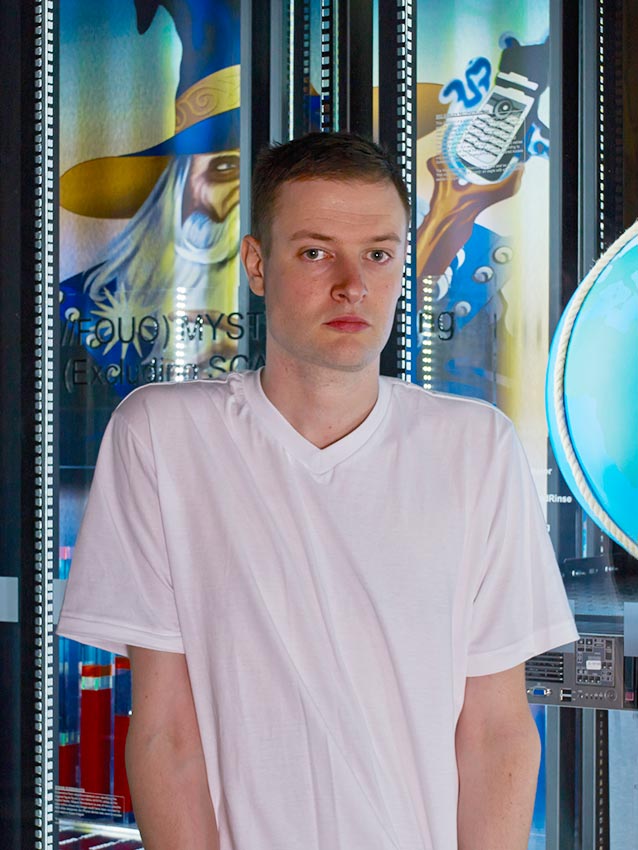
Simon Denny, 2015. Photo: Nick Ash.
Core Team Members
Commissioner: Heather Galbraith
Curator: Robert Leonard
Project Director: Jude Chambers
Exhibition Attendants
Pauline Autet, Amber Baldock (Exhibition Registrar), Andrea Bell, Monica Buchan-Ng, Jodie Dalgleish, Jhana Millers, Tendai John Mutambu, Sophie Thorn, Alice Tyler
Project Publication Secret Power
Editors: Robert Leonard, Mary Barr
Contributing Writers: Chris Kraus, Metahaven
Designer: David Bennewith
Publisher: Mousse Publishing
In his exhibition for the Biennale Arte 2015, Simon Denny drew upon the historic weight of Venice to offer an unprecedented perspective on the visual culture of the Five Eyes intelligence alliance revealed in documents leaked by NSA contractor Edward Snowden in 2013.
Secret Power took its name from Secret Power – New Zealand's Role in the International Spy Network. The 1996 book by investigative journalist Nicky Hager presented the public with its first look at New Zealand’s most elite intelligence bureau, the GCSB.
Secret Power was installed in two locations: the Biblioteca Nazionale Marciana and Marco Polo Airport. In the Marciana Library, Denny used operational server racks of the kind used in data collection facilities as exhibition vitrines. On these he placed sculptural interpretations of visuals used by intelligence agencies to represent operations and communicate complex programs.
The exhibits stood amidst maps and paintings commissioned by Venice’s historical state powers to represent powerful data. Visualisations like these, including maps based on geographical surveys and intelligence reports by travellers such as Marco Polo, were crucial to Venice’s dominance as a commercial and political power.
In the airport a series of plaques, profiling historical maps and mapmakers from the Marciana’s collection, extended into international territory. These greeted travellers as they passed through security into the city. Recreations of the library’s richly painted ceilings spanned the airport’s floor, offering a unique chance to consider at close hand the allegorical symbolism and iconography within these works. They were state-commissioned in the mid-1500’s to represent the value of knowledge and express the power and authority of Venice.
Four of the Secret Power vitrines have been purchased to become part of the national collection at the Museum of New Zealand Te Papa Tongarewa. Other aspects of the installation were acquired by MoMA and private collections.
In 2016 Secret Power will be shown at the Museum of New Zealand Te Tongarewa.
More on the artist
Simon Denny studied at the University of Auckland’s Elam School of Fine Arts and at Frankfurt’s Städelschule, graduating in 2009. Born in Auckland, he is currently based in Berlin. Denny was a founding member of the Auckland artist-run space Gambia Castle.
Denny’s work is regularly exhibited in New Zealand and is held in major public and private collections in New Zealand, including the Museum of New Zealand Te Papa Tongarewa, Auckland Art Gallery Toi o Tamaki, Christchurch Art Gallery Te Puna o Waiwhetu, and Dunedin Public Art Gallery.
Denny has been included in shows in major European and international art museums, including the ICA, London; Kunsthaus Bregenz; KW Center for Contemporary Art, Berlin; Fridericianum, Kassel, Centre Pompidou, Paris; the Ullens Centre for Contemporary Art in Beijing and the Aspen Art Museum.
In 2013, he presented All You Need Is Data. The DLD 2012 Conference Redux at Kunstverein Munich; Petzel Gallery, New York and Hamburger Bahnhof, Berlin (as one of four nominees for the 2013 Preis der Nationalgalerie für Junge Kunst). In 2013, he also exhibited The Personal Effects of Kim Dotcom, at MUMOK, Vienna, and, in 2014, at Firstsite, Colchester and the Adam Art Gallery, Wellington. In 2014 Denny presented New Management at the Portikus, Frankfurt.
In 2015 MoMA PS1 in New York presented The Innovator's Dilemma, the first museum to survey a number of his recent projects and the first large-scale museum solo show of Simon Denny in the United States. He was included in the 2008 Sydney Biennale and the 2008 Brussels Biennial.
In 2012, Denny won the Baloise Art Prize at Art Basel. He has been the only New Zealand artist invited to exhibit in the curated show at La Biennale di Venezia, which he did in 2013 and was shortlisted for the 2014 and 2012 Walters Prize in New Zealand.
Denny’s work has been extensively written about and reviewed including in the New York Times, Focus, Frieze, Art Forum, Modern Painters, Monopol, Mousse and Süddeutsche Zeitung.
Since Secret Power for the Biennale Arte 2015, Denny has continued to achieve international success with Products of Organising at the Serpentine Sackler Gallery, London in 2015 and Business Insider at WIELS, Brussels in 2016 as well as exhibiting at the 2016 Berlin Biennale.
2013 - Bill Culbert
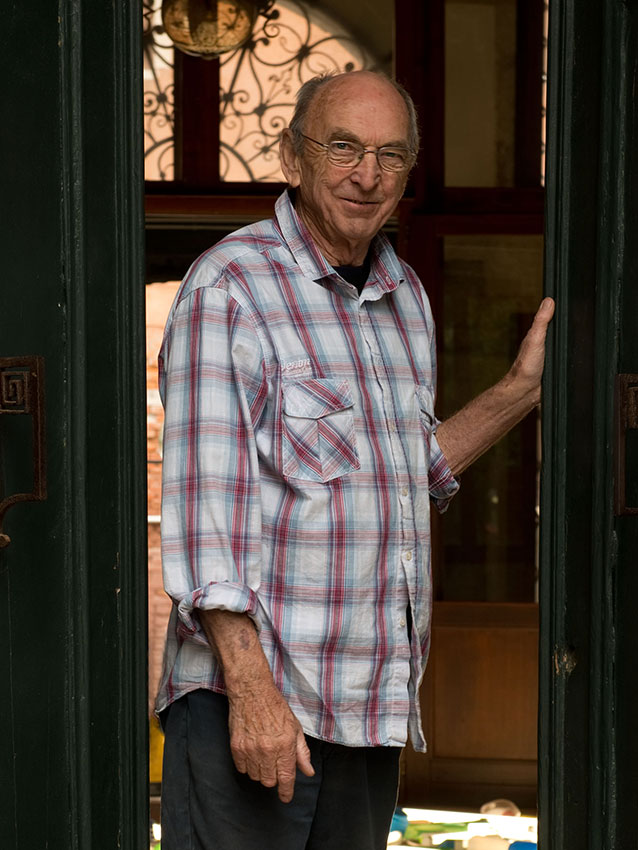
Bill Culbert, 2013. Photo: Jennifer French.
Core Team Members
Commissioner: Jenny Harper
Deputy Commissioner: Heather Galbraith
Curator: Justin Paton
Project Director: Jude Chambers
Exhibition Attendants
Amber Baldock, Sean Duxfield, Lauren Gutsell, Jamie Hanton, Anne Harlow, Marlaina Key, Angela Lyon, Gina Matchitt, Pippa Milne, Hutch Wilco
Project Publication Bill Culbert: Front Door Out Back
Editor: Heather Galbraith
Contributing Writers: Justin Paton, Ian Wedde, Yves Abrioux, Andrew Wilson
Designer: Anna Brown
Publisher: Christchurch Art Gallery Te Puna o Waiwhetu, in partnership with Creative New Zealand and Massey University.
At the Biennale Arte 2013 Bill Culbert’s exhibition, Front Door Out Back, featured nine installations using fluorescent lights and recycled domestic objects.
Front Door Out Back occupied various exhibition spaces in the historic Instituto Santa Maria della Pietà (La Pietà) including an outdoor courtyard and a corridor where Vivaldi once taught violin.
On arrival visitors encountered Bebop, a 15-metre-long work suspended from the ceiling of the historic corridor, where 34 second-hand tables and chairs seemed to have been lifted and spun through the space, each one pierced by a single bolt of fluorescent light.
In another work, Daylight Flotsam Venice, Culbert fed 150 fluorescent tubes into a densely packed field of recycled plastic bottles creating a carpet of colour, seen against the backdrop of the canal beyond.
he nine installations included 10 works which were Bebop; Drop; Two Drop; Daylight Flotsam Venice; HUT, Made in Christchurch; Level; Strait; Walk Blue; Walk Reflection and Where are the other two?
Daylight Flotsam Venice and Drop were purchased by the Museum of New Zealand Te Papa Tongarewa, for the national collection while Bebop was purchased by Christchurch Art Gallery Te Puna o Waiwhetu.
In 2015, selected works from Front Door Out Back were exhibited in the National Art School Gallery, Sydney.
More on the artist
Bill Culbert, born in 1935, is a pioneer of the use of electric light in art, making works that harness the qualities of this intangible medium from as early as the 1960s. Over a career spanning almost six decades and more than 100 solo exhibitions throughout New Zealand, England, Europe, the United States and Australia he has pushed the frontiers of art through a rigorous, inventive and economic use of materials.
Light is both medium and subject matter in his sculptures, installations and photographs. It is also the means of mounting a philosophical enquiry into the art object and its materiality. Culbert's sculptural installations make striking use of found and new materials, illuminating the qualities of common things and their surrounding environments.
Culbert's extraordinarily diverse career relates to many different aspects of contemporary art, among them constructivism, op art, kinetic art and conceptualism. His importance is indicated by his participation in a number of major group exhibitions, including a survey of British and Brazilian Concrete Artists at the Centro Brasileiro Britânico in São Paulo, Brazil (2012): the Op Art exhibition at the Schirn Kunsthalle in Frankfurt, Germany in 1997; Un siècle de Sculpture Anglaise, at Jeu de Paume in Paris (1996); and the Sixties Art Scene at The Barbican, London (1993).
Culbert’s work is owned by numerous public and private collections around the world. He has permanent commissioned sculptures in London, Wellington and Auckland. Many are collaborative works with Ralph Hotere, including Fault on the facade of City Gallery Wellington (1994), Void (2006) in the atrium of Museum of New Zealand Te Papa Tongarewa and Black Stump, a 20m-high column outside the Vero Centre in Auckland. His work is held in public and private collections throughout New Zealand and Europe.
He was born in Port Chalmers, near Dunedin and now divides his time between Provence, France and London, England.
2011 - Michael Parekowhai
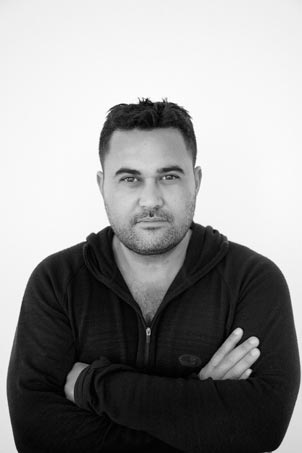
Michael Parekowhai, 2010. Photo: Derek Henderson.
Core Team Members
Commissioner: Jenny Harper
Project Director: Tanea Heke
Exhibition Attendants
Rose Campbell, Daniel Hayles, Sophie Keyse, Elizabeth Lochhead, Amy Mansfield, Catherine McKay, Ariana Odermatt, Flavio Villani
Project Publication Michael Parekowhai On First Looking Into Chapman’s Homer
Editor: Mary Barr
Contributing Writers: Gregory Burke, Cushla Parekowhai, Justin Paton
Designer: Kelvin Soh
Publisher: Michael Lett, Roslyn Oxley9 Gallery
Music and performance was a central aspect of Michael Parekowhai’s exhibition for the New Zealand pavilion at the Biennale Arte 2011.
On First Looking into Chapman’s Homer, included an intricately-carved red Steinway concert grand piano and two concert grands fabricated in bronze supporting two cast bronze bulls. On one piano a full‐size bull rested on the closed lid with its massive body suggesting the folding forms of landscape. On the other piano the bull stood offering an eye‐to‐eye challenge to anyone sitting at the keyboard. The installation also featured a figure from the Kapa Haka series (Officer Taumaha) and two small bronze olive tree saplings (Constitution Hill).
Five New Zealand pianists performed a mix of New Zealand, jazz and classical music on the carved Steinway piano He Korero Purakau mo te Awanui o Te Motu story of a New Zealand river. The public was also invited to play the piano at the discretion of the pianist.
The New Zealand pavilion was in the Palazzo Loredan dell’Ambasciatore on the Grand Canal near the Accademia Bridge. This 15th‐century Gothic palace once belonged to the noble Loredan family and was the birthplace of two Doges of Venice – Leonardo Loredan (1436‐1521) and Francesco Loredan (1685‐1762).
After La Biennale di Venezia, the work was exhibited at the Musée de quai Branly in Paris. The work returned to New Zealand where the standing bull was exhibited at the edge of post-earthquake Christchurch in 2012. Parekowhai’s work caught the public imagination and a fundraising campaign kept the work in Christchurch.
He Korero Purakau mo te Awanui o Te Motu: story of a New Zealand river, the ornately-carved grand piano which formed the centrepiece of On First looking into Chapman’s Homer, was purchased by the Museum of New Zealand Te Papa Tongarewa for the national collection.
More on the artist
Michael Parekowhai has an extensive exhibition history. His work is held in many significant public and private collections in New Zealand and Australia, as well as several permanent collections across the Asia-Pacific region and in Europe.
Working across the disciplines of sculpture, installation and photography, Parekowhai’s work plays with perceptions of space, locality and nationhood. Early in his career he participated in exhibitions – Cultural Safety (1995), Headlands (1992) and Choice! (1990). These are now recognised as seminal in the development of contemporary New Zealand art. Along with artists such as Peter Robinson, Jacqueline Fraser, Shane Cotton and Lisa Reihana, Parekowhai’s work in this period expanded the terms of reference for contemporary Māori art.
Born in Porirua in 1968, Michael Parekowhai is of European and Māori (Ngati Whakarongo) descent. He graduated with a BA and MA from the University of Auckland’s Elam School of Fine Arts, where he is now Associate Professor in Fine Arts. In 2001 he was awarded an Arts Foundation of New Zealand Laureate.
2009 - Judy Millar
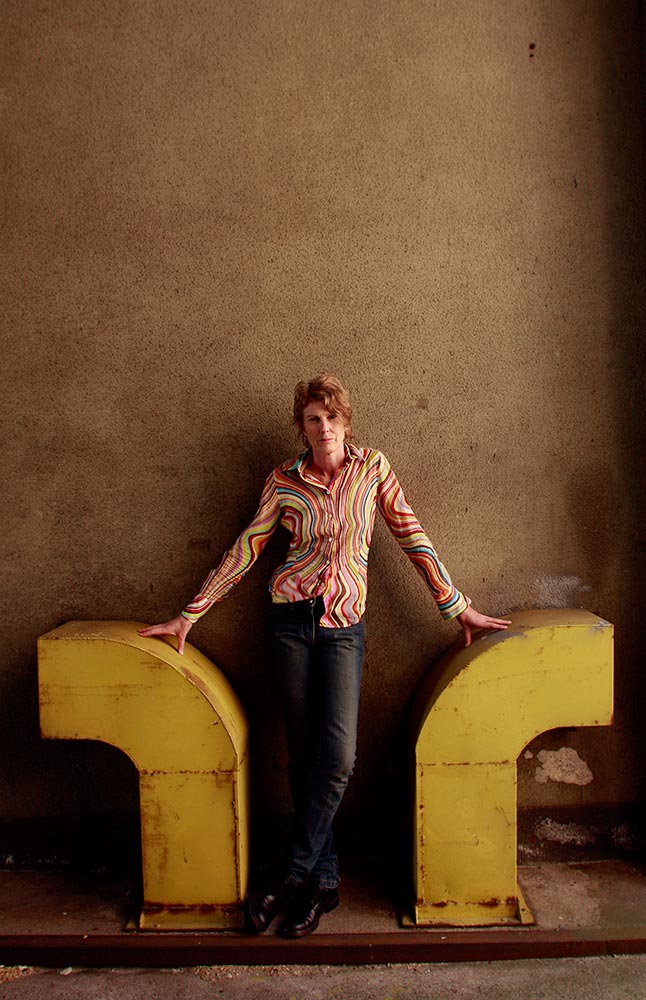
Judy Millar, 2008. Photo courtesy of Judy Millar.
Core Team Members
Commissioner: Jenny Harper
Deputy Commissioner: Heather Galbraith
Curators: Leonhard Emmerling
Project Manager: Tanea Heke
Exhibition Attendants
Veronica Green, Simon Glaister, Julia Holdernes, Marnie Slater, Robyn Pickens, Thomasin Sleigh, Shelley Jahnke-Bishop, Frances Loeffler, Serena Bentley
Project Publication Giraffe–Bottle–Gun
Editor: Leonhard Emmerling
Contributing Writers: Jennifer Gross, Seymour H. Knox Jr
Designer: Harald Richter
Publisher: Kerber Verlag
New Zealand’s participation at the Biennale Arte 2009 was titled The Collision and comprised two exhibitions: Judy Millar’s Giraffe-Bottle-Gun and Francis Upritchard’s, Save Yourself.
Judy Millar’s exhibition Giraffe-Bottle-Gun was a site-specific installation created for Venice’s only circular church, La Maddalena.
Large painted canvases surge and loop around the circular church, channeling the path of the viewer and establishing views and vistas around and across the architectural space. It challenged the traditional relationship between the object of art and the exhibition space by pushing viewers up close to the canvases in an immersive experience. The colour coursed through the church, almost spilling out onto the piazza outside.
Giraffe-Bottle-Gun was located a short distance from Frances Upritchard’s Save Yourself.
Both Judy Millar’s and Francis Upritchard’s installations returned to New Zealand in February 2010 for a four month exhibition at the Museum of New Zealand Te Papa Tongarewa. Works from both were purchased by the museum for the national collection.
More on the artist
Judy Millar was born in Auckland and grew up on Auckland’s North Shore. Since 2005 she has shared her time between Auckland and Berlin and has a significant reputation in Europe.
Her paintings are held in all major public collections in New Zealand and in several international collections including the Kunstmuseum St Gallen and Tichy Foundation in Prague.
Millar received the paramount award in the 2002 Wallace Art Awards, was the inaugural winner of the McCahon House Residency in 2006 and was awarded the Creative New Zealand Visual Arts Residency in New York in 2009.
In 2011 she returned to La Biennale di Venezia with a Collateral Event Time, Space, Existence, was included in Rohkunstbau, Berlin in 2010 and has had solo exhibitions at the Auckland Art Gallery (2002) and the IMA, Brisbane (2013).
Millar studied at The University of Auckland, Elam School of Fine Arts, graduating with a BFA in 1980 and an MFA in 1983. As recipient of a scholarship from the Italian Government in 1990, she spent a year in Turin, Italy, where she studied Italian arts of the 1960s and 1970s. She was a lecturer at University of Auckland, Elam School of Fine Arts from 1998 to 2005 and a part time lecturer since 2007.
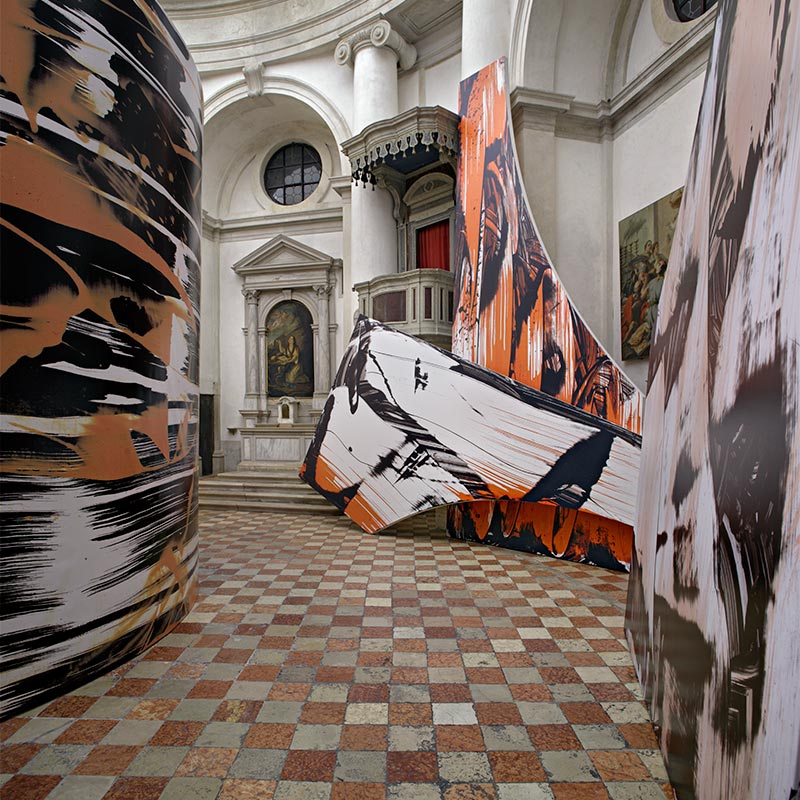
Judy Millar, "Giraffe – Bottle – Gun", installation view, 2009. Photo: Judy Millar.
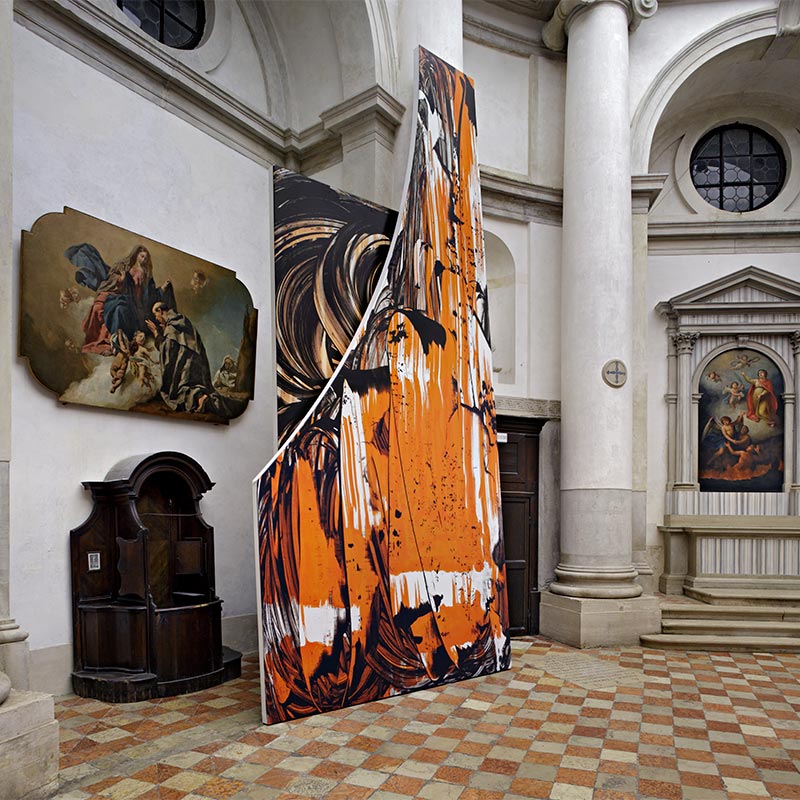
Judy Millar, "Giraffe – Bottle – Gun", installation view, 2009. Photo: Judy Millar.
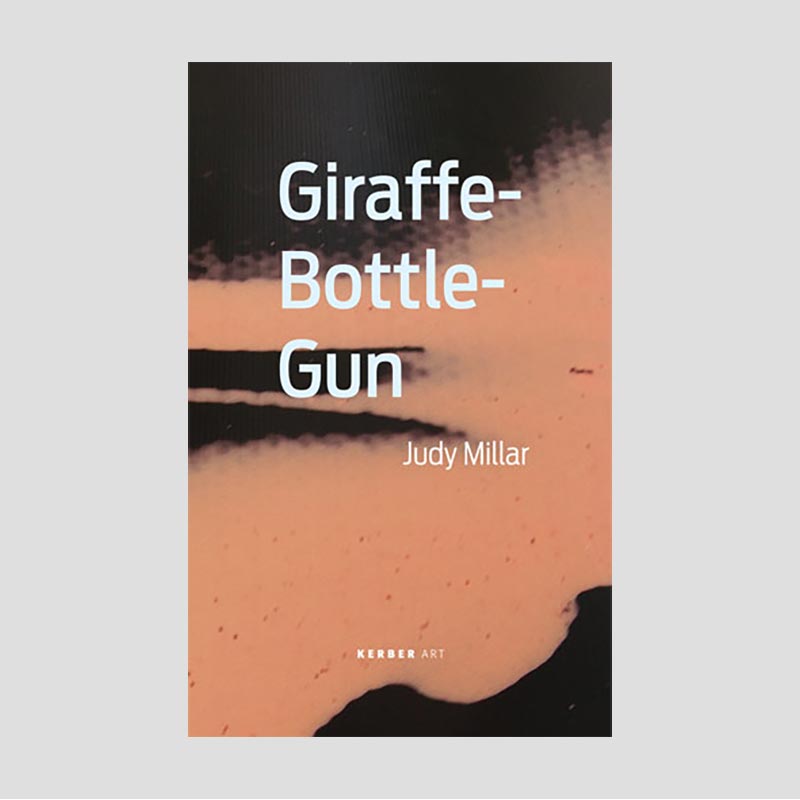
Judy Millar, "Giraffe – Bottle – Gun", exhibition catalogue. 2009. Design: Kerber Art, photo: Gow Langsford Gallery.
2009 - Francis Upritchard
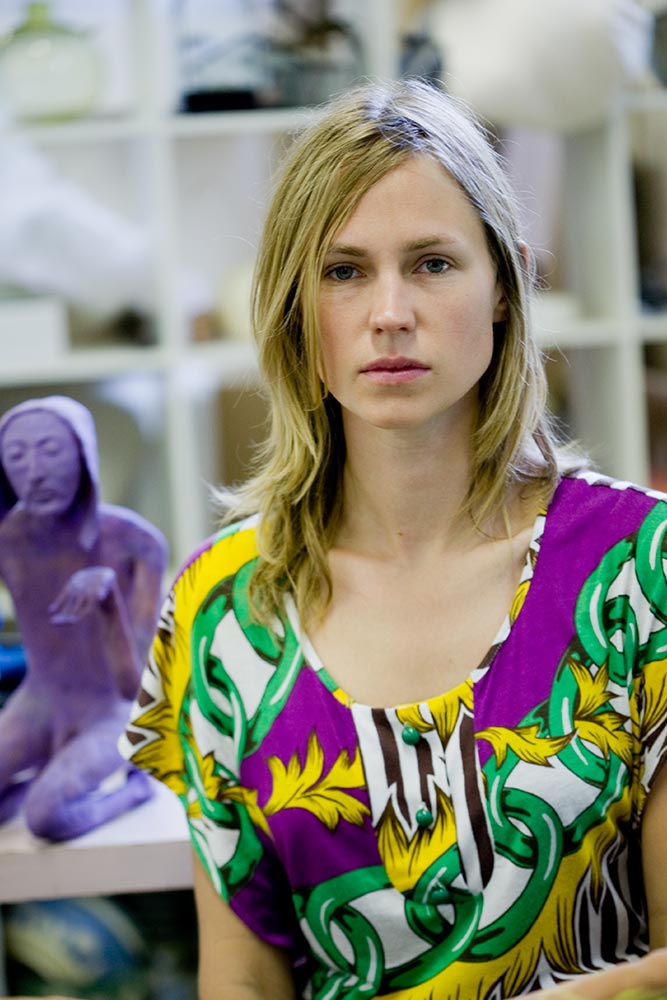
Francis Upritchard, 2008. Photo courtesy of Francis Upritchard.
Core Team Members
Commissioner: Jenny Harper
Deputy Commissioner: Heather Galbraith
Curators: Heather Galbraith, Francesco Manacorda
Project Manager: Tanea Heke
Exhibition Attendants
Veronica Green, Simon Glaister, Julia Holdernes, Marnie Slater, Robyn Pickens, Thomasin Sleigh, Shelley Jahnke-Bishop, Frances Loeffler, Serena Bentley
Project Publication Francis Upritchard: Save Yourself
Editor: Heather Galbraith
Contributing Writers: Heather Galbraith, Francesco Manacorda, Melanie Oliver
Designer: Kalee Jackson
Publishers: Francis Upritchard: Save Yourself project team and the Govett-Brewster Art Gallery.
New Zealand’s participation at the Biennale Arte 2009 was titled The Collision and comprised two exhibitions: Francis Upritchard’s Save Yourself and Judy Millar’s Giraffe-Bottle-Gun.
Save Yourself by Francis Upritchard included clusters of figures and structures spread through three chambers within the Fondazione Claudio Buziol at the Palazzo Mangilli-Valmarana overlooking the Grand Canal.
Upritchard used the palazzo’s ornate mirrors to backlight and reflect table-height scenes of figures, illuminated by hand-made lamps. The figures were quasi human: figurative and yet small enough to be dolls; so highly coloured as to suggest they may have come from another world. Each grouping occupied an imaginary landscape from an indeterminate historical period. The installation combined the antique and futuristic, making the scene both familiar and unsettling.
Save Yourself was located a short distance from Judy Millar’s Giraffe-Bottle-Gun.
Both Francis Upritchard’s and Judy Millar’s installations returned to New Zealand in February 2010 for a four month exhibition at the Museum of New Zealand Te Papa Tongarewa. Works from both were purchased by the museum for the national collection.
More on the artist
Francis Upritchard was born in New Plymouth and graduated from Canterbury University's Ilam School of Fine Arts in 1997. She has exhibited extensively in New Zealand, Australia, Europe and the United States and now lives in London.
She had major museum solo shows at Hammer Museum, Los Angeles in 2014, Douglas Hyde Gallery, Dublin in 2013; Marugame Genichiro-Inokuma Museum of Contemporary Art, Japan in 2013; Nottingham Contemporary in 2012; and Vienna Secession in 2009.
Jealous Saboteurs at City Gallery, Wellington in 2016 was the first major survey exhibition of Francis Upritchard, spanning 20 years of work. The exhibition was a joint project between the gallery and Monash University Museum of Art, Melbourne.
In 2006 Francis Upritchard was the winner of the Walters Prize, New Zealand's most prestigious contemporary art prize.
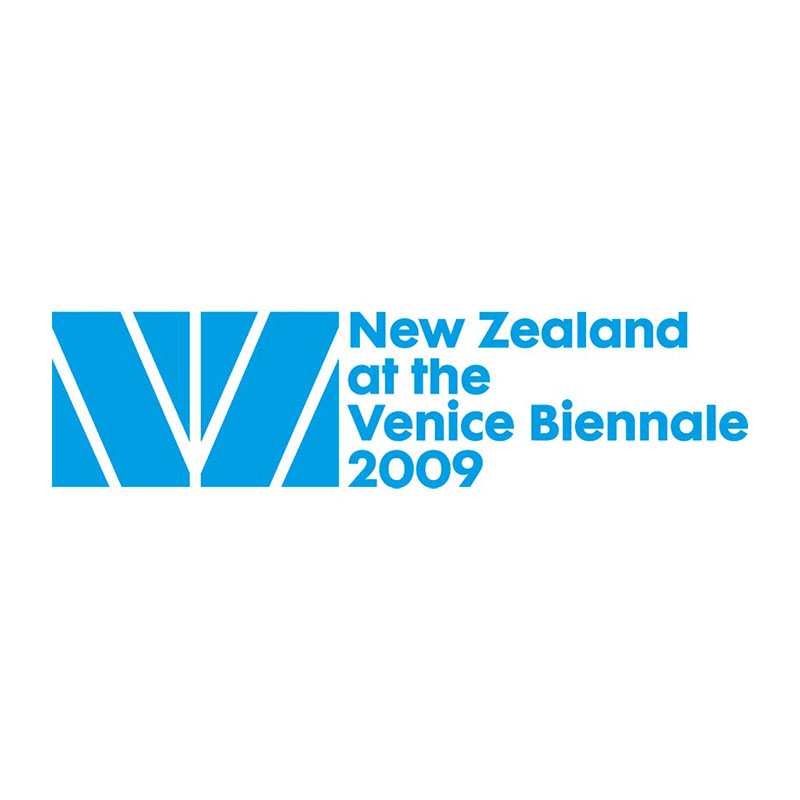
New Zealand at Venice Logo 2009. Design: Practise.
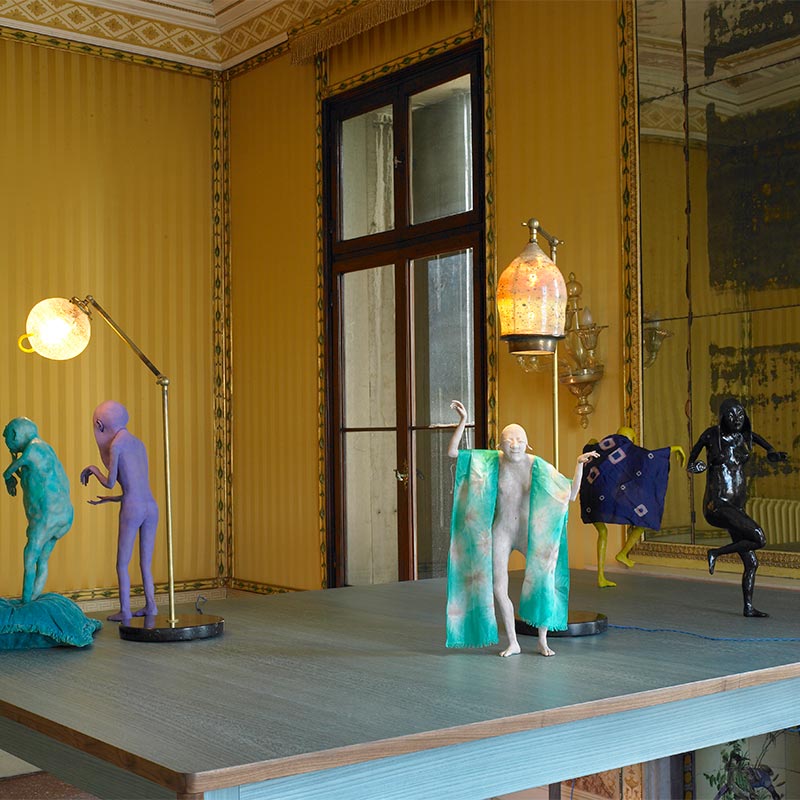
Francis Upritchard, "Save Yourself", installation view, 2009. Photo: Andy Stagg.
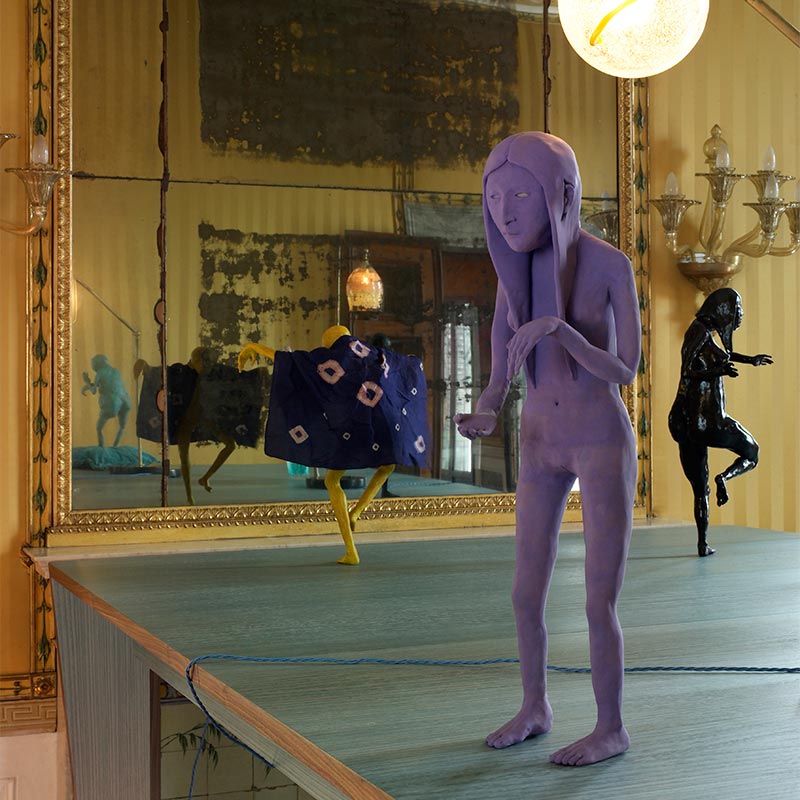
Francis Upritchard, "Save Yourself", installation view, 2009. Photo: Andy Stagg.
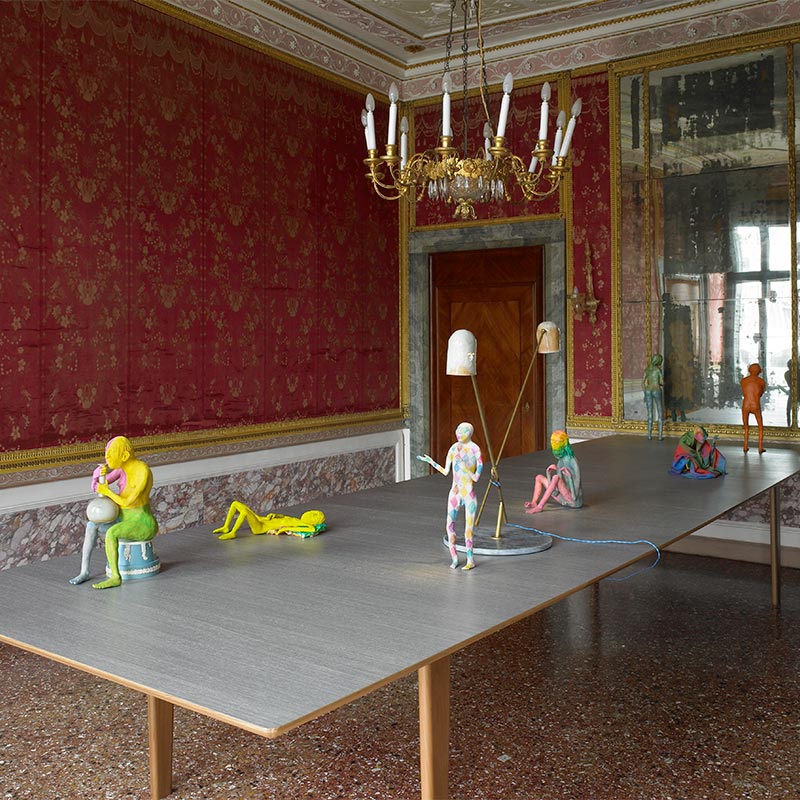
Francis Upritchard, "Save Yourself", installation view, 2009. Photo: Andy Stagg.
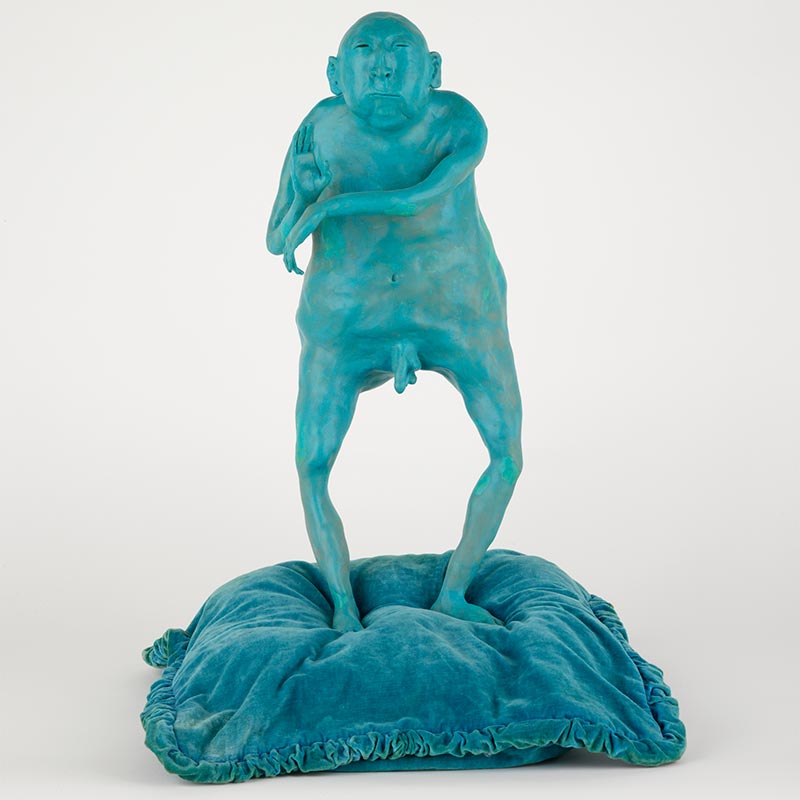
Francis Upritchard, "Psychic Pushing", 2009. Photo: Anna Arca courtesy Kate MacGarry, London.
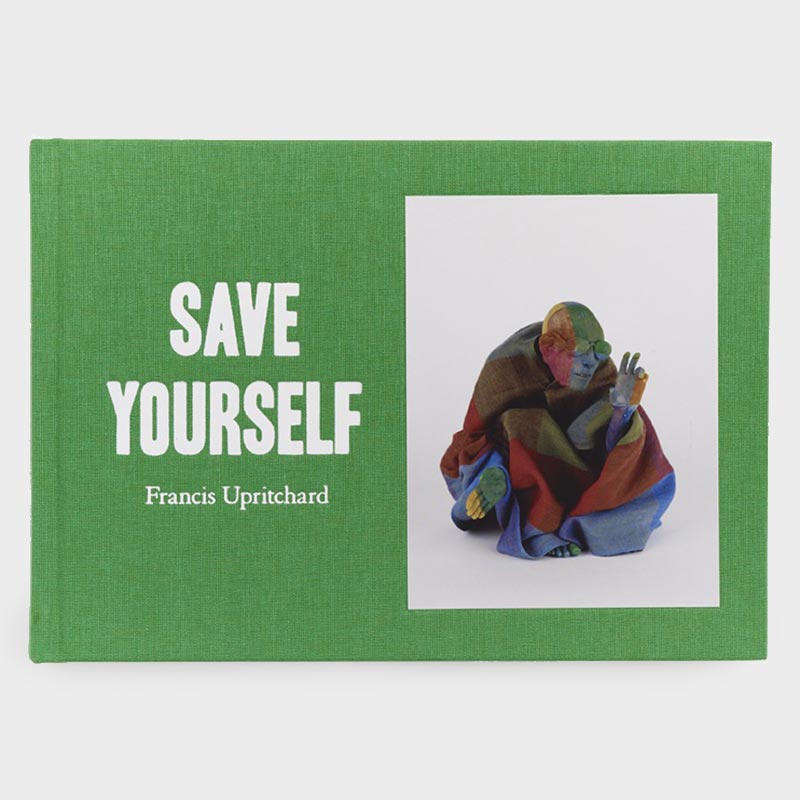
Francis Upritchard, "Save Yourself", exhibition catalogue, 2009. Design: Kalee Jackson. Photo: Bryan James. Courtesy of the Govett-Brewster Art Gallery.
2007 - Speculation
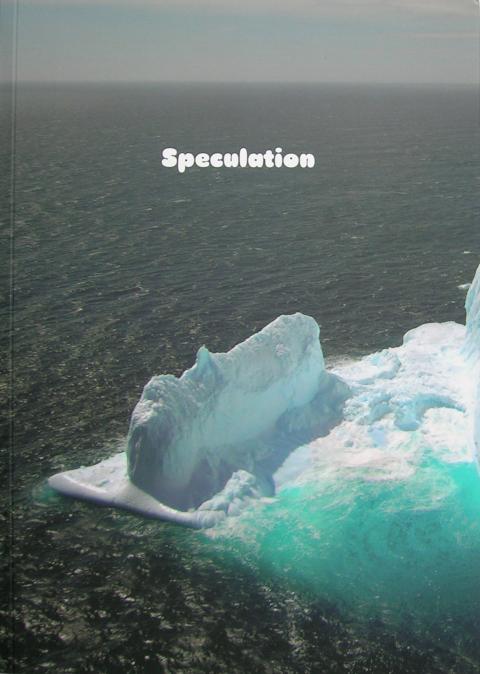
Speculation publication, 2007. Design: Warren Olds, Studio Ahoy. Photo: Creative New Zealand
In 2007 there was no official New Zealand presentation at La Biennale di Venezia. Instead, Creative New Zealand undertook a study of international visual arts events to assist in developing strategies for the future.
There were two self-initiated New Zealand projects at the Biennale Arte 2007.
The book, Speculation was published by NZ Venice Project and JRP|Ringier, and featured work by 30 New Zealand artists selected by eight curators. More than 2000 copies of the book were distributed to vernissage attendees.
Aniwaniwa by Brett Graham and Rachael Rakena was selected for La Biennale di Venezia's Collateral Events section. This work melded sculptural forms with moving images and a haunting soundtrack. It was housed in an ancient salt warehouse in Dorsoduro, one of the six sestieri in Venice. Central to the work was the theme of submersion, as a metaphor for cultural loss.
Locally, Aniwaniwa refers to rapids at the narrowest point of the Waikato River by the village of Horahora, where Graham’s father was born and his grandfather worked at the Horahora power station. In 1947 the town was flooded to create a hydro-electric dam downstream and many historic sites significant to Graham’s hapu ‘Ngati Koroki’ were lost.
2005 - ET AL.
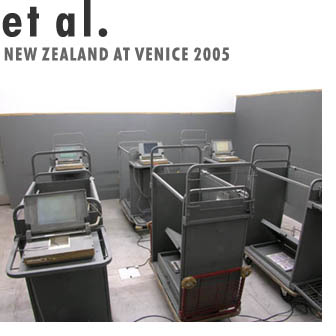
et al., "the fundamental practice", 2005. Design: Kelvin Soh.
Core Team Members
Commissioner: Gregory Burke
Curator: Natasha Conland
Project Manager: Terry Urbahn
Exhibition Attendants
Emily Cormack, Tessa Giblin, Sharonagh Tengblad, Richard Wormley
Project Publication et al. the fundamental practice
Editors: Greg Burke, Natasha Conland
Contributing Writers: Jim Barr, Mary Barr, Mark Kremer, Chris Kraus
Designer: The Wilderness
Publisher: Creative New Zealand
The collective et al. staged the fundamental practice for the New Zealand pavilion at the Biennale Arte 2005. The site-specific installation was located directly behind the Santa Maria della Pietà church (La Pietà) on the Riva degli Schiavoni.
the fundamental practice continued et al.’s process of research and investigation, using techniques of procedure and presentation from other ideological systems – scientific, military, political, revolutionary. Using computer programming, the installation involved both audio-visual and kinetic components. It took the form of a metaphysical machine - shuffling, sorting and creating from a diversity of belief systems.
In the installation space, with little guide, the viewer became an explorer, having to feel comfortable with a condition of not knowing, while finding a route through belief systems and their mechanised representatives.
Crucial to the fundamental practice were moments when movement, sound and speech were orchestrated, seemingly autonomously, into a unified crescendo. This increased a sense that the objects and voices were attempting to engineer the viewer’s consciousness.
Subsequent to the project at Venice, et al. were invited to mount an earlier work, altruistic studies, within the prestigious Art Unlimited programme at Art 39 Basel 2008. Iterations of the fundamental practice were later shown at the Institute of Modern Art, Brisbane and Artspace, Auckland.
More on the artist
et al. is an anonymous artists’ collective based in New Zealand.
Central to et al.’s work is an exploration of the human tendency to establish truths and orthodoxies in response to the unknown. This is reflected in et al.’s long-standing choice not to reveal their identities. The collective is currently steered by one artist who remains anonymous outside the title et al.
et al. investigates ideas which relate to group culture and behaviour. In their installations, various practices run through and alongside one another. Scientific experiments, political ideologies, the classroom and the most extreme of religious rituals are dismantled and exposed as mind-control mechanisms.
The artists involved have a 20-year history of exhibiting under a variety of titles that include personal and group histories, androgynous names and gender switching. These identities have also been associated with discrete practices involving objects, paintings, films, sound-works, books and installations. Their work draws on fragments of images, ideas, objects, texts and even voices and involves collaboration with musicians, writers and scientists, among others, in its production.
Over 25 years et al. has amassed one of the most substantial exhibition records in New Zealand contemporary art. International exhibitions include non-existent in the everyday world?, KalimanRawlins, Melbourne in 2012; Hirschfield, Berlin in 2009; altruistic studies_vote more than once, Art Unlimited, Art 39 Basel, 2008; altruistic studies: no vote!, Interstitial Zones, Historical Facts, Archaeologies of the Present and Dialectics of Seeing, Argos Centre for Art & Media, Brussels in 2008.
Recent solo exhibitions include For The Common Good, West, Den Haag, Netherlands in 2015; simultaneous invalidations #3, Auckland Art Gallery in 2011; trans-cryption, Michael Lett, Auckland in 2011 and that’s obvious! that’s right! that’s true!, Christchurch Art Gallery in 2009.
In 2004 et al.’s restricted access was awarded the Walters Prize, New Zealand’s most prestigious visual arts award.
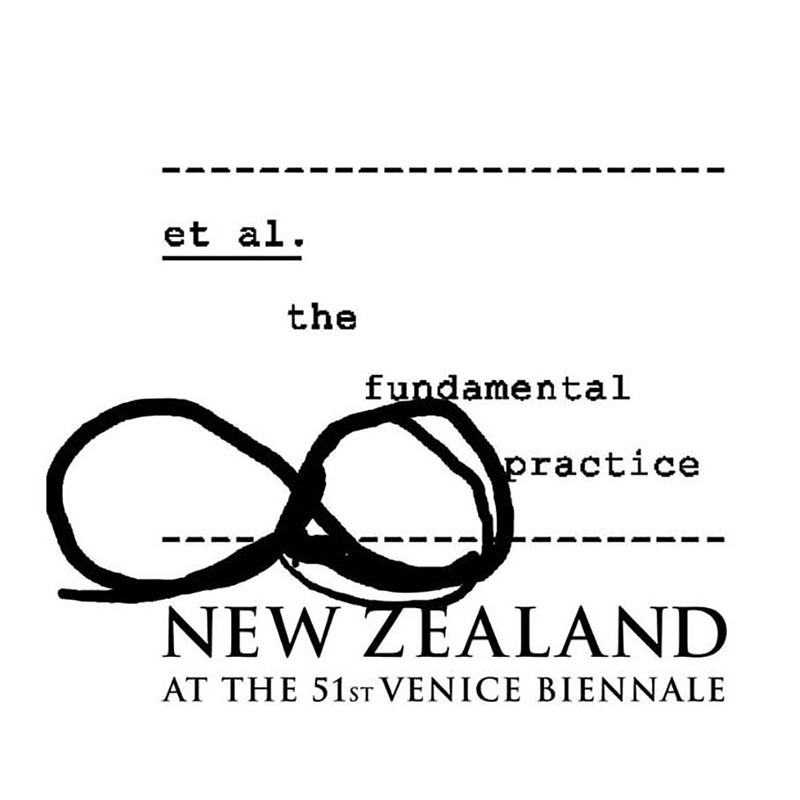
New Zealand at Venice logo. Design: Kelvin Soh.
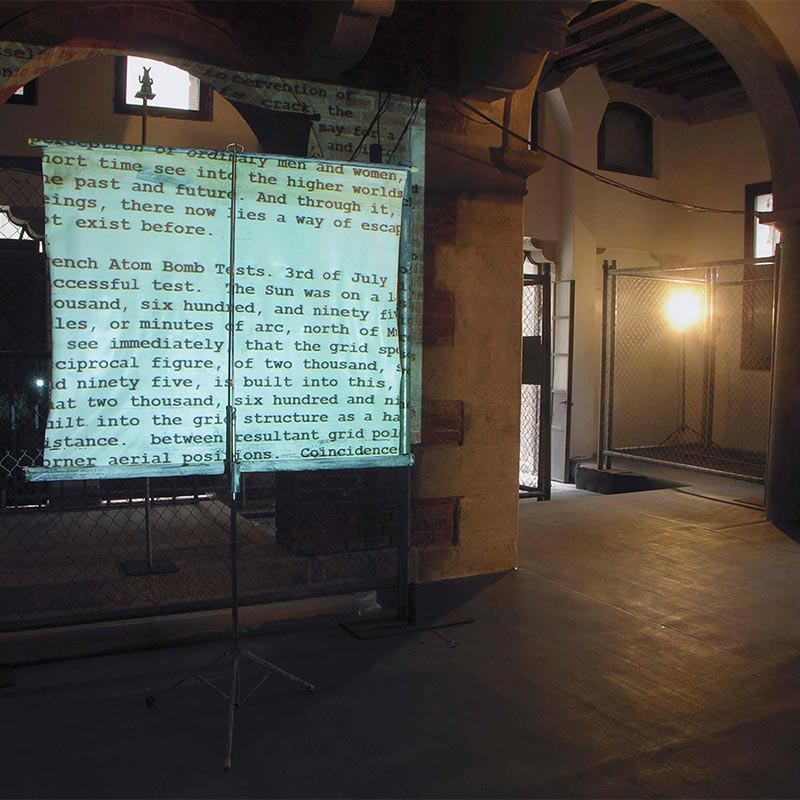
et al., "the fundamental practice", installation view, 2005. Photo: Jennifer French.
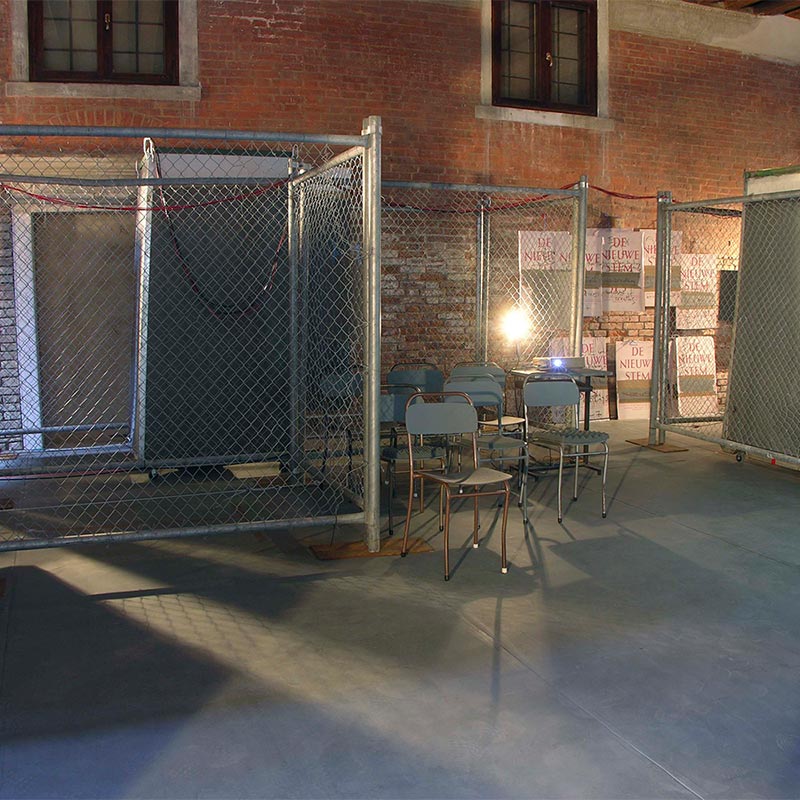
et al., "the fundamental practice", installation view, 2005. Photo: Jennifer French.
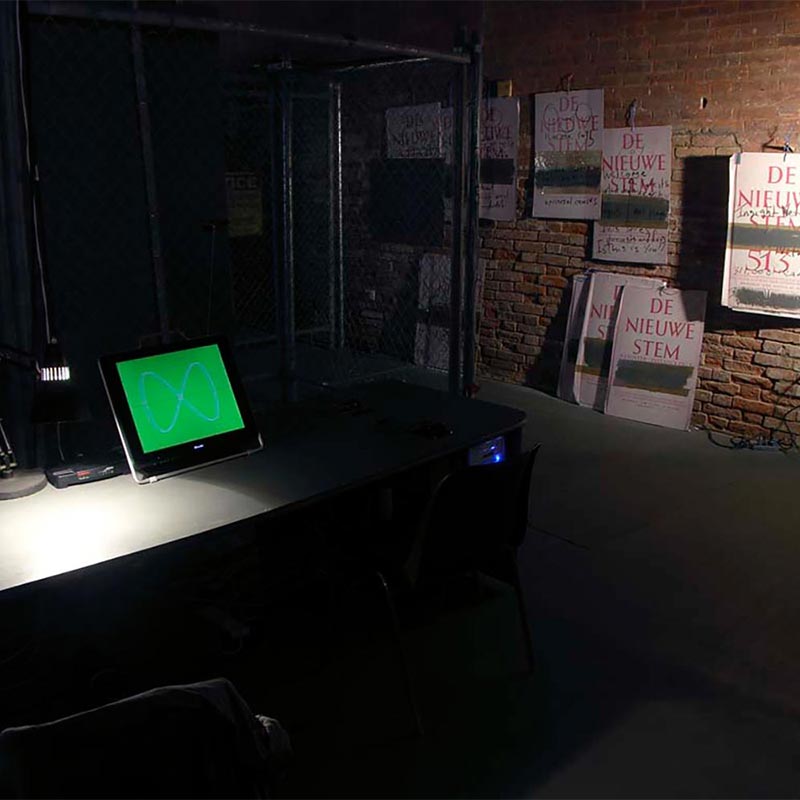
et al., "the fundamental practice", installation view, 2005. Photo: Jennifer French.
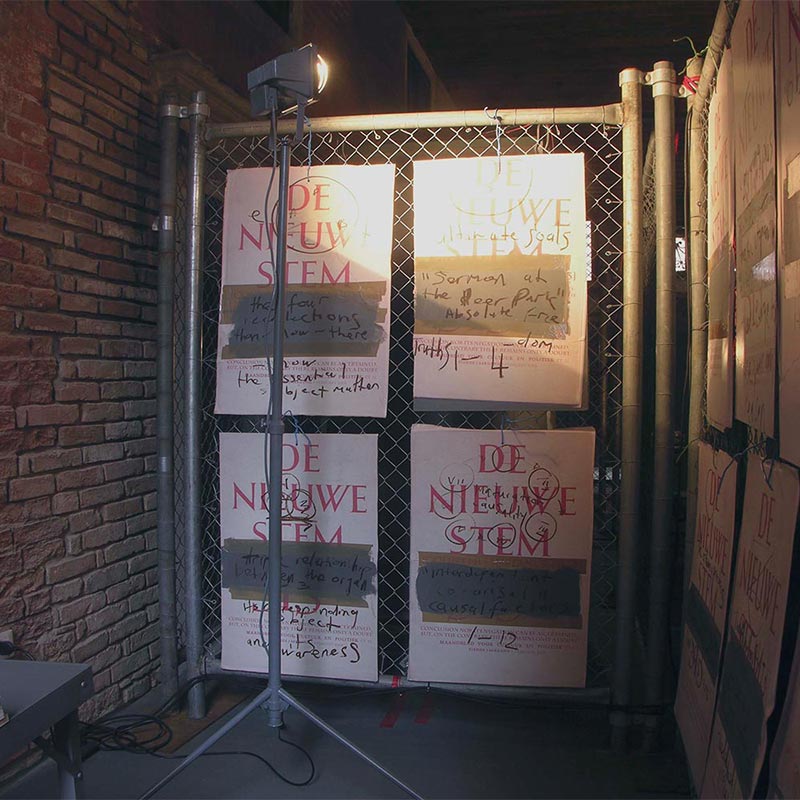
et al., "the fundamental practice", installation view, 2005. Photo: Jennifer French.
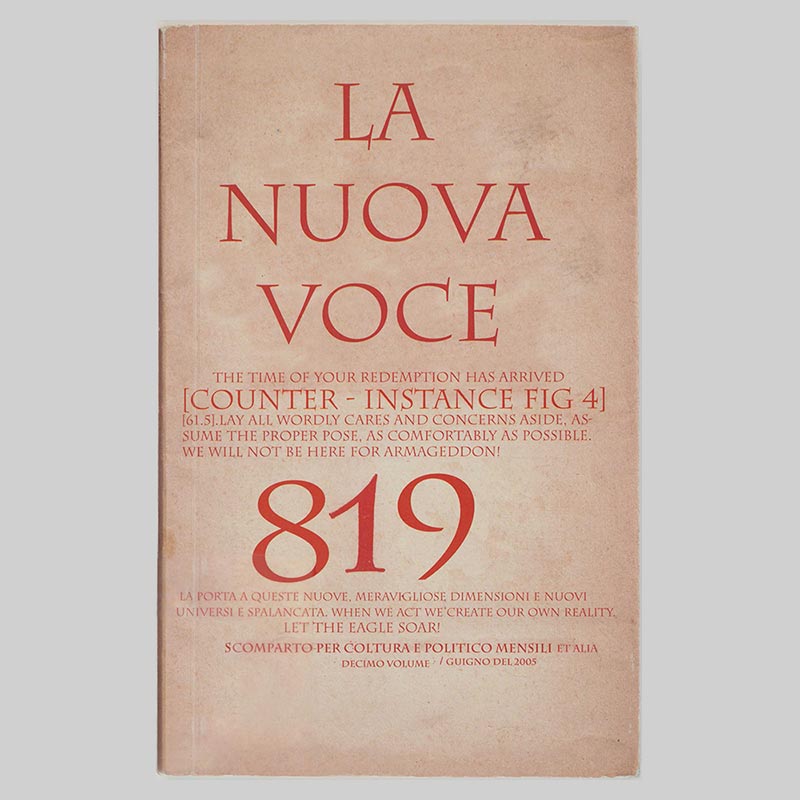
et al., "the fundamental practice", exhibition catalogue, 2005. Design: The Wilderness. Photo: Jennifer French
2003 - Michael Stevenson
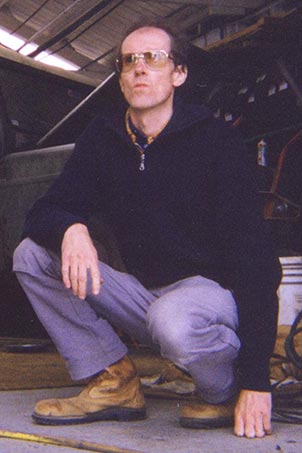
Michael Stevenson, 2003. Photo: Jennifer French.
Core Team Members
Commissioner: Dame Jenny Gibbs
Curators: Boris Kremer, Robert Leonard
Project Manager: Dilys Grant
Exhibition Attendants
Jennifer French, Felicity Milburn, Robyn Notman, Rebecca Wilson
Project Publication This is the Trekka
Editor: Lara Strongman
Contributing Writers: Alan Rodgers-Smith, David Craig, Boris Kremer
Designer: Revolver Archiv fur aktuelle Kunst
Researchers: Emma Bugden, Courtney Johnston
Publishers: Creative New Zealand, Revolver Archiv für aktuelle Kunst
Berlin-based artist Michael Stevenson’s project for the Biennale Arte 2003 was installed in the circular La Maddelena church in Cannaregio. In This is the Trekka, Stevenson drew attention to historical moments by reproducing artefacts, including the exhibition’s centrepiece, a fully restored Trekka.
The Trekka was New Zealand’s only nationally produced vehicle. It was manufactured in Onehunga, Auckland in the late 1960s and early 1970s, with a chassis and motor imported from Czechoslovakia.
The exhibition used the visual language of a trade show from the period when Trekkas were being made. It included seemingly disparate components which collectively created a story about trade and nationalism. A wall made of New Zealand produced butter boxes linked the Trekka to another ingenious Kiwi invention, the Moniac. The latter was a pioneering analogue computer for recording the forces and checks of a nation’s economy by water passing through a complex series of valves and gates.
This is the Trekka was purchased by the Museum of New Zealand Te Papa Tongarewa and shown in Small World Big Town: Contemporary Art from Te Papa at City Gallery Wellington Te Whare Toi in 2005.
More on the artist
Born in 1964, Michael Stevenson makes sculptures, installations and films. His works are often based on a single historical story, sometimes reproducing an object central to the tale. He is particularly interested in historical moments that demonstrate the intersection of art and economics.
Since 2000 he has lived and worked in Berlin and in 2011 he undertook a full-time teaching professorship at the Akademie der Bildenden Künste in Nürnberg.
In 2002 Stevenson was awarded the New Zealand residency programme at the Künstlerhaus Bethanien, Berlin. In 2005 he was awarded a work grant by the Senatsverwaltung für Wissenschaft, Forschung und Kultur, Berlin and in 2006 he was the Capp St. resident artist at the Wattis Institute CCA in San Francisco.
He has exhibited extensively throughout New Zealand, Australia, Europe and America. Recent exhibitions include the Dojima River Biennale, Osaka (2015); the Berlin and Liverpool Biennales (2014); The Chronicle of Interventions at the Tate Modern, London (2014) and Listening in the Ruins of the 20th Century, UTS Gallery, Sydney (2013).
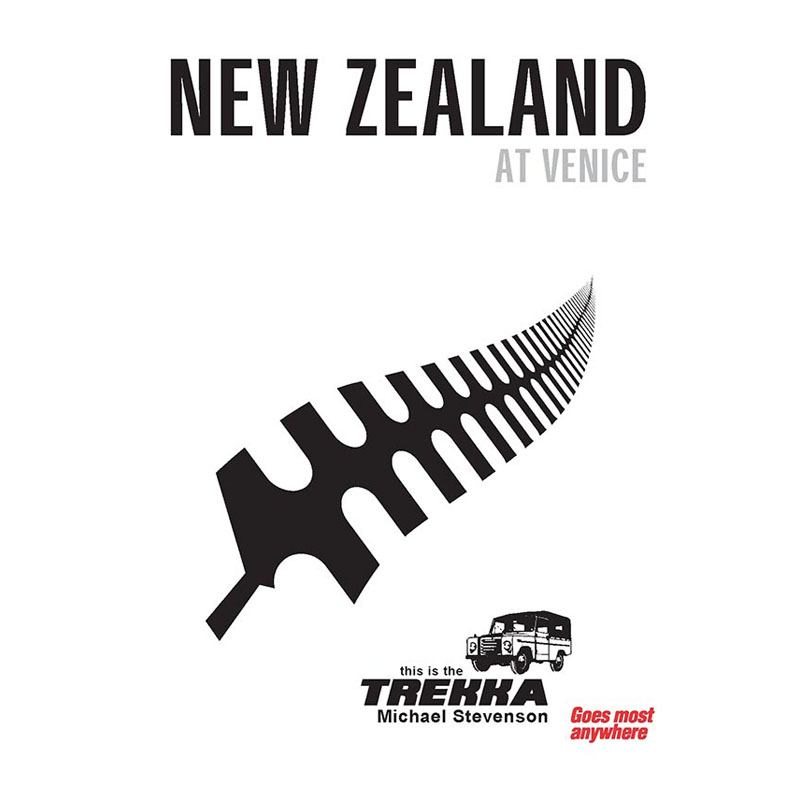
New Zealand at Venice logo 2003. Design: Norris Childs and Linda Niccol, Mission Hall.
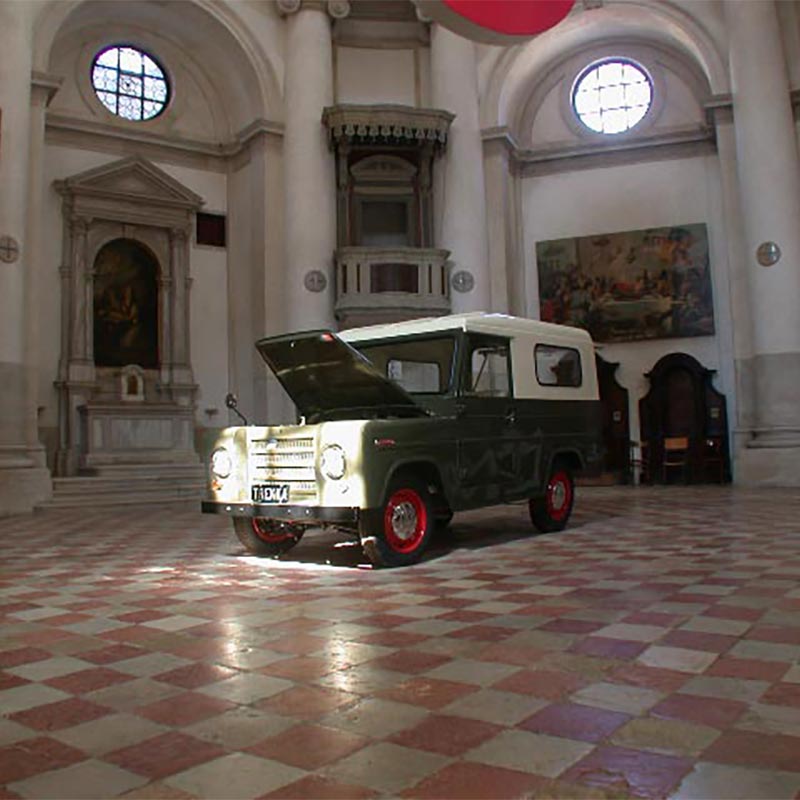
Michael Stevenson, "This is the Trekka", installation view, 2003. Photo: Jennifer French.
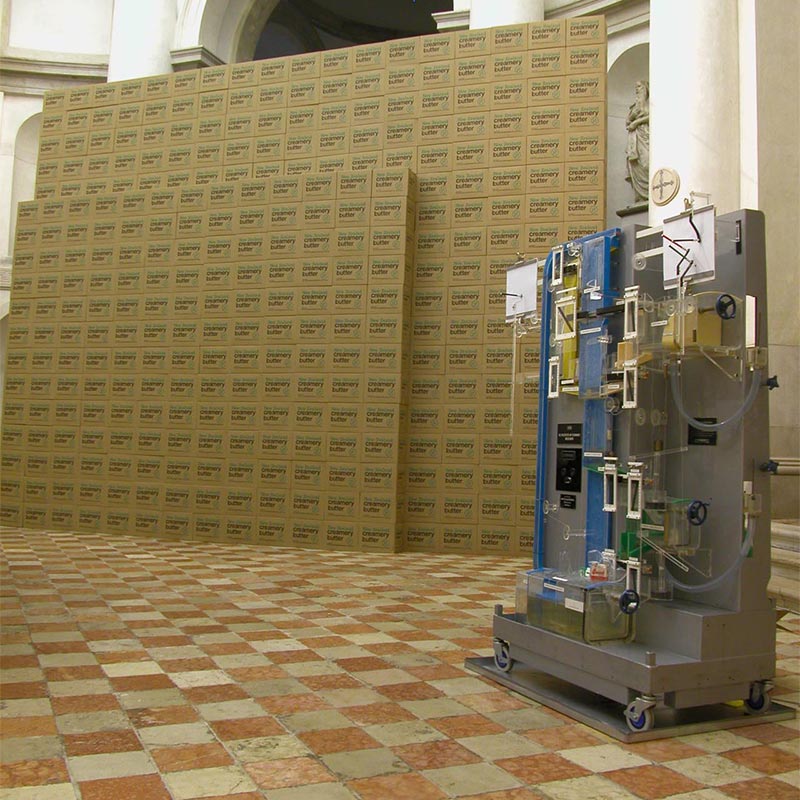
Michael Stevenson, "This is the Trekka", installation view, 2003. Photo: Jennifer French.
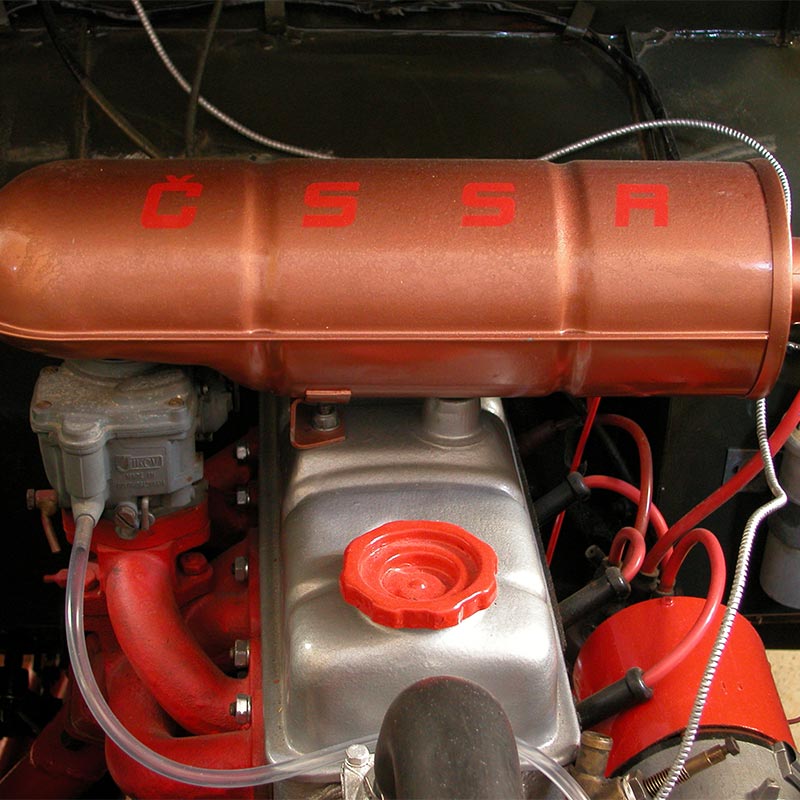
Michael Stevenson, "This is the Trekka", installation view, 2003. Photo: Jennifer French.
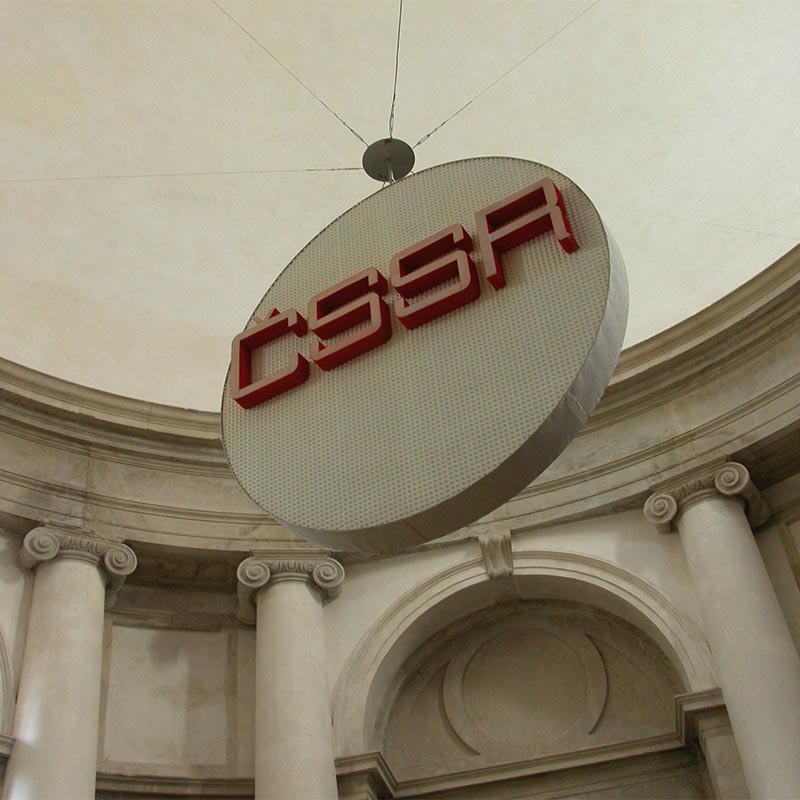
Michael Stevenson, "This is the Trekka", installation view, 2003. Photo: Jennifer French.
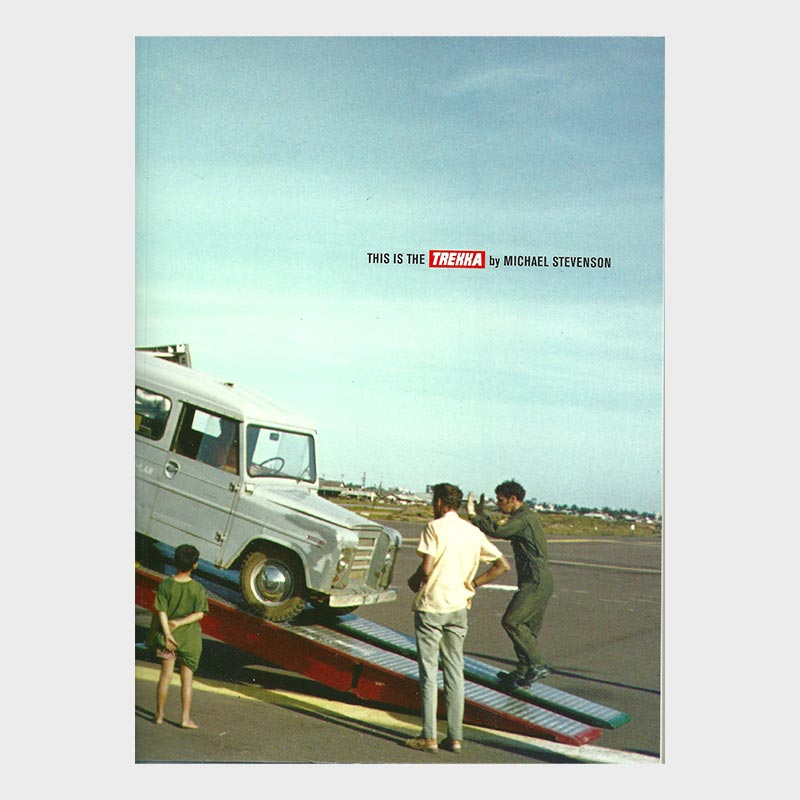
Michael Stevenson, "This is the Trekka", exhibition catalogue, 2003. Design: Revolver Archiv fur aktuelle Kunst. Photo: Creative New Zealand.
2001 - Peter Robinson
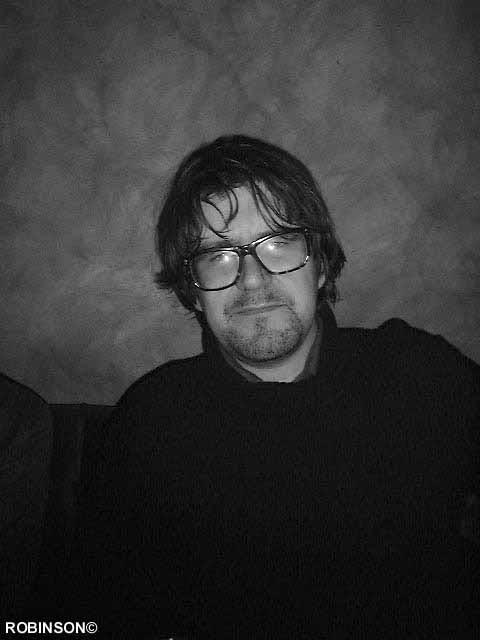
Peter Robinson, 2000. Photo courtesy of Peter Robinson.
Core Team Members
Commissioner: Dame Jenny Gibbs
Curator: Gregory Burke
Project Manager: Elizabeth Caldwell
Exhibition Attendants
D’Arcy Dalzell, Jane Macknight, Kendrah Morgan, Megan Tamati-Quennell.
Project Publication Bi Polar
Editor: Content, Gregory Burke; Artist Information, Belinda Jones; Text, John Hannaforn
Contributing Writers: Greg Burke, Ewen McDonald, Anna Miles
Designer: Neil Pardington, George Clarke, Eyework Design
Publisher: Creative New Zealand
Peter Robinson’s exhibition Divine Comedy was part of New Zealand’s first national exhibition at the Biennale Arte 2001. It was one of two individual installations shown under the title Bi-Polar at the Museo di Sant’ Apollonia. The other was Jacqueline Fraser’s A Demure Portrait of the Artist Strip Searched.
The title for Robinson’s exhibition came from Dante Alighieri’s book Divine Comedy. It featured a series of sleek sculptures and digital prints using a binary code translation of Dante’s Inferno. It was based on complex concepts of existence and drew together unlikely points of reference from quantum physics to Stephen Hawking's book A Brief History of Time.
In his installation Robinson positioned formally discrete objects and prints within the space. Included was a model of a stealth bomber, a stack of lacquered sheets formed from the negative space described by the numeral zero, wall prints written in computer code showing fields of ones and zeros and models of expanding universes in the process of begetting further parallel universes.
Both Robinson and Fraser are of European and Māori descent. Their installations drew on a wealth of European references from Marcel Duchamp to Albert Einstein. Nevertheless, it is possible to detect a Māori accent in their work. This tension and intermingling between Māori and international contexts was another layer of reference suggested by the title Bi-Polar.
Divine Comedy was shown at Auckland Art Gallery in 2002 and works from Bi-Polar were shown at the City Gallery Wellington in 2003. One of works from Divine Comedy was purchased by the Museum of New Zealand Te Papa Tongarewa for the national collection.
More on the artist
Peter Robinson was born in Ashburton in 1966. He studied sculpture at Ilam School of Fine Arts from 1985 to1989 and now lives in Auckland.
Robinson’s work has been exhibited extensively in New Zealand and internationally. He participated in the Jakarta Biennial 2015 (curated by Charles Esche); 13th Istanbul Biennale in 2013 (curated by Fulya Edermci); 11th and 18th Biennale of Sydney in 1998 and 2012 and the 8th Baltic Triennale of International Art, Vilnius in 2002.
Recently he presented Recreation Centre in the Nouveau Festival 2015 at Centre Pompidou, Paris, France.
Robinson’s work has been included in major international touring exhibitions including: Continental shift, Ludwig Forum für Internationale Kunst, Aachen in 2000; Toi Toi Toi: three generations of artists from New Zealand, Museum Fridericianum, Kassel in 1999; and Cultural safety: contemporary art from New Zealand, Frankfurter Kunstverein, Frankfurt am Main in 1995.
Robinson was nominated for the Walters Prize in 2006 for The Humours at Dunedin Public Art Gallery and again in 2008 when he won for his exhibition ACK at Artspace, Auckland.
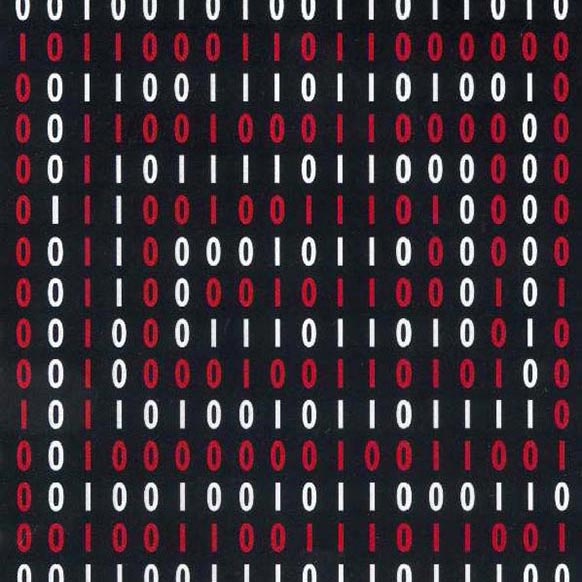
New Zealand at Venice logo 2001. Design: Neil Pardington and George Clark, Eyework Design.
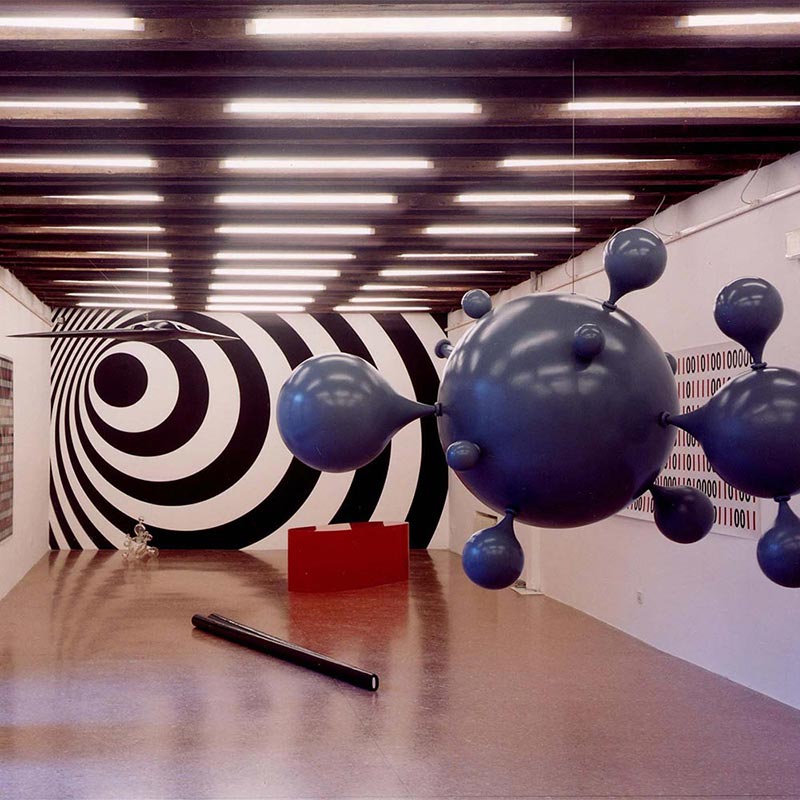
Peter Robinson, "Divine Comedy", installation view, 2001. Photo: Bryan James.
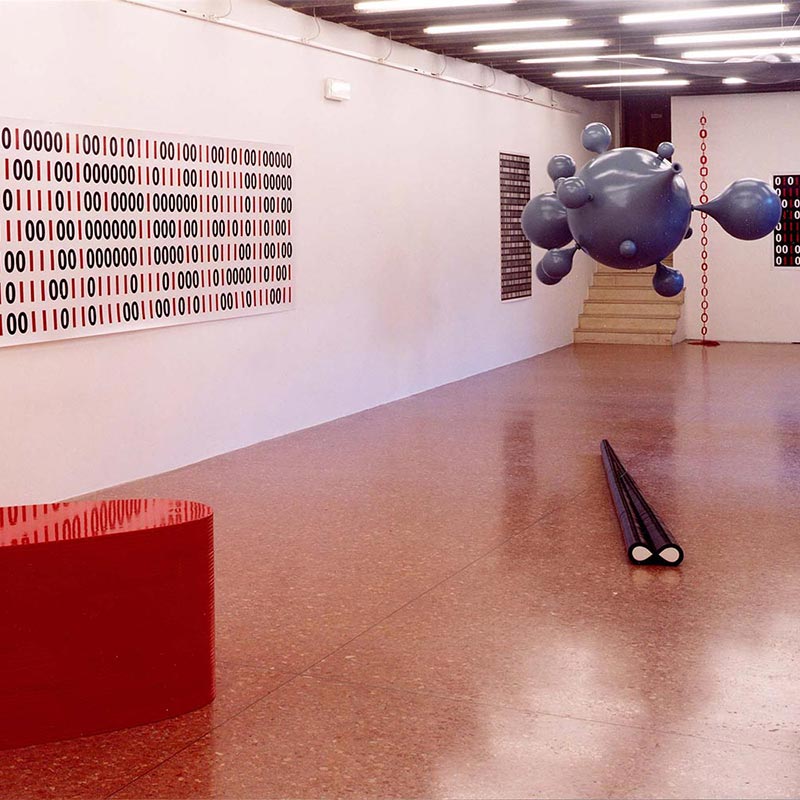
Peter Robinson, "Divine Comedy", installation view, 2001. Photo: Bryan James.
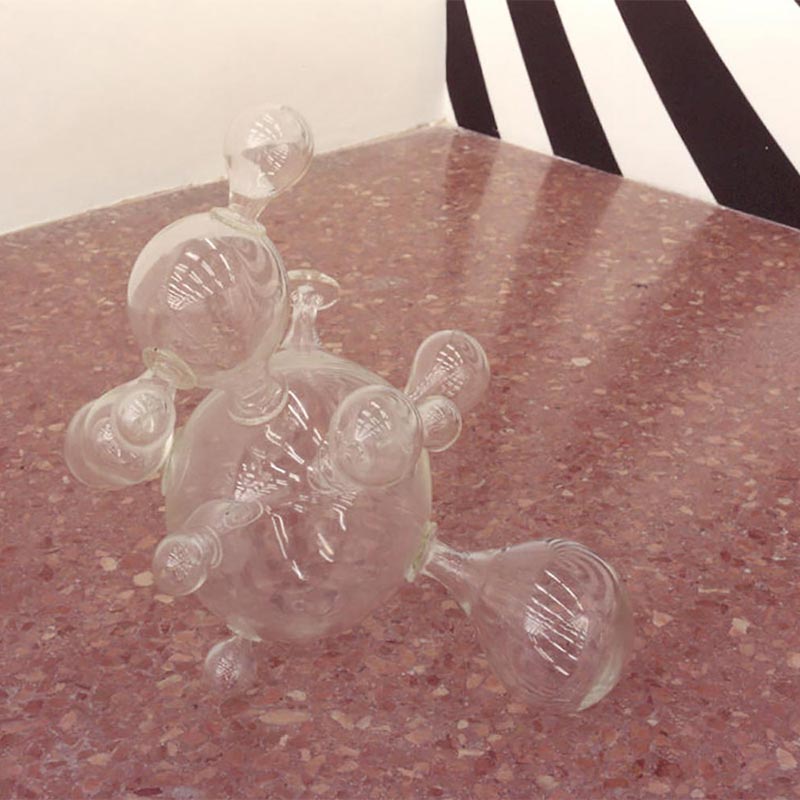
Peter Robinson, "Inflation Theory 2", 2001. Photo: Bryan James.
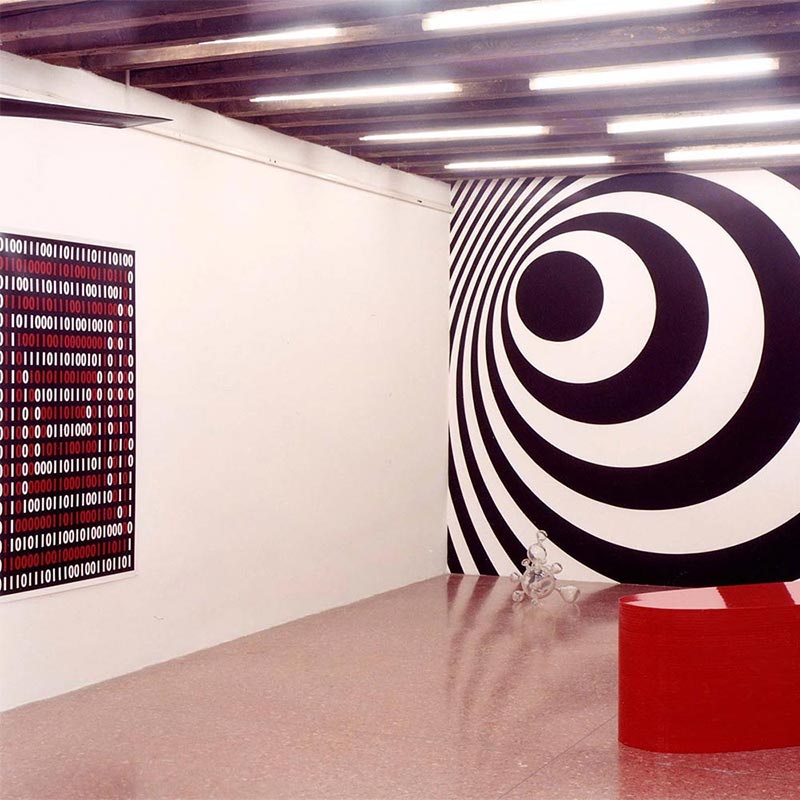
Peter Robinson, "Divine Comedy", installation view, 2001. Photo: Bryan James.
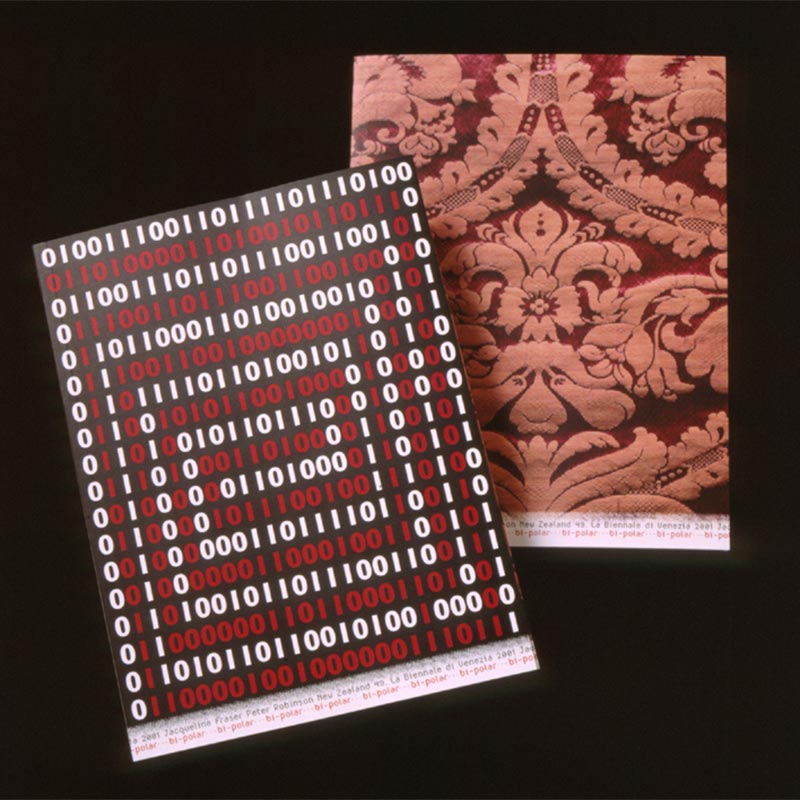
"Bi Polar", exhibition catalogues, 2001: Design: Neil Pardington and George Clark, Eyework Design. Photo: Creative New Zealand.
2001 - Jacqueline fraser
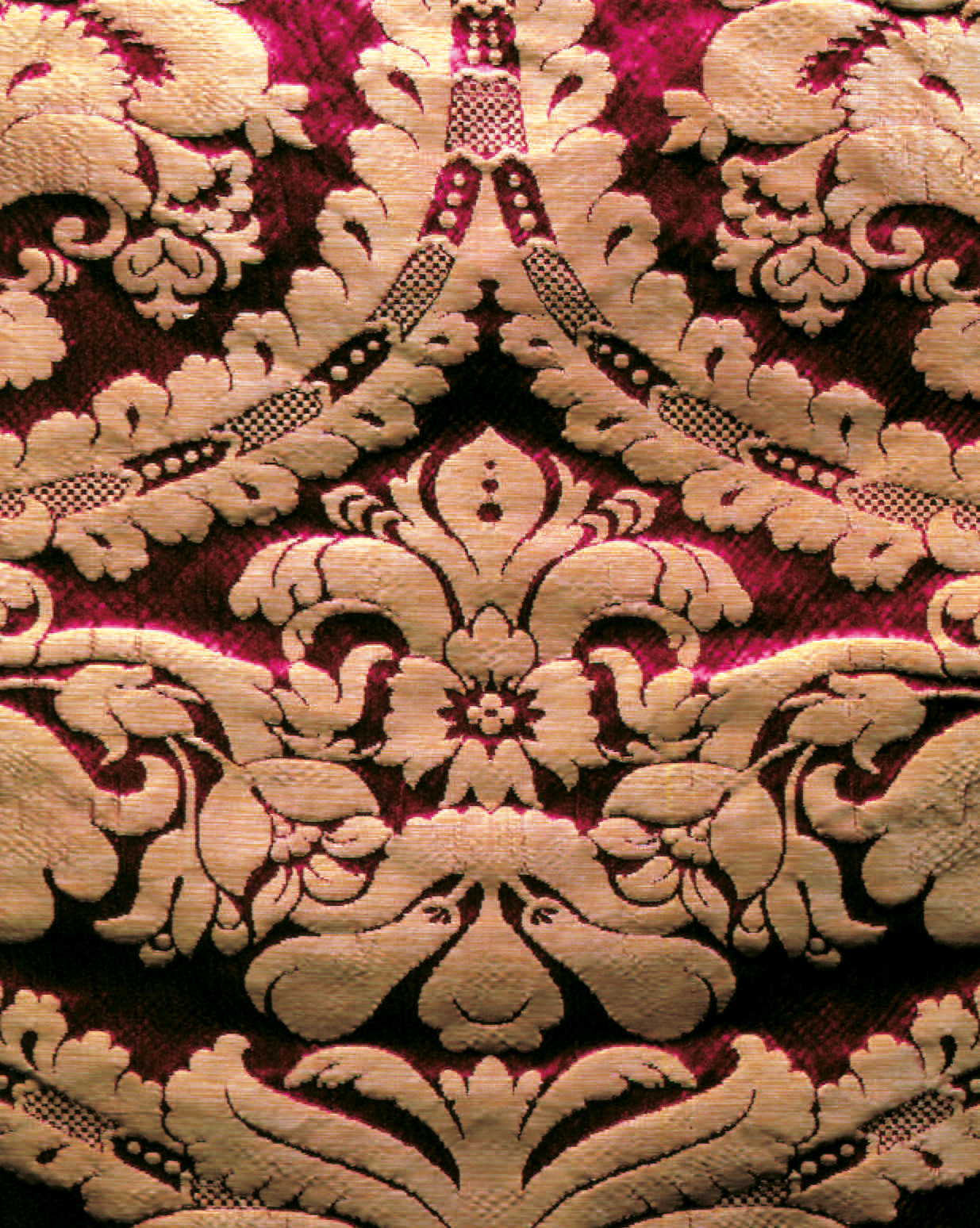
New Zealand at Venice logo 2001. Design: Neil Pardington and George Clark, Eyework Design.
Core Team Members
Commissioner: Dame Jenny Gibbs
Curator: Gregory Burke
Project Manager: Elizabeth Caldwell
Exhibition Attendants
D’Arcy Dalzell, Jane Macknight, Kendrah Morgan.
Project Publication Bi Polar
Editor: Content, Gregory Burke; Artist Information, Belinda Jones; Text, John Hannaforn
Contributing Writers: Greg Burke, Ewen McDonald, Anna Miles
Designer: Neil Pardington, George Clarke, Eyework Design
Publisher: Creative New Zealand
Jacqueline Fraser’s exhibition A Demure Portrait of the Artist Strip Searched was part of New Zealand’s first national exhibition at the 49th Venice Art Biennale. It was one of two individual installations shown under the title Bi-Polar at the Museo di Sant’ Apollonia.
Site-specific, A Demure Portrait of the Artist Strip Searched included drops of Italian damask fabric, veils and canopies. They formed a maze through which visitors could explore the sculptural and text-based installations.
Eleven portraits were set within the space, depicting the artist and an adolescent boy in progressive stages of a narrative. While the characters were formed out of luxurious fabrics and dressed in the high style of leading fashion designers, such as Comme des Garcons, Prada and Moschino, they alluded to issues of sickness and health as well as social and psychological disorder.
A Demure Portrait of the Artist Strip Searched was the first in a trilogy of installations that continued throughout 2001 at the Yokohama Triennale, Japan and the New Museum of Contemporary Art, New York.
More on the artist
Jacqueline Fraser was born in Dunedin, New Zealand in 1956 and has exhibited internationally in a career that spans more than three decades.
In 2001 Fraser had a solo exhibition at the New Museum of Contemporary Art in New York and was short listed for the Artes Mundi in the United Kingdom in 2004. Fraser’s work has been presented in major European and international art museums, including the Superstars, Kunsthalle Wien, Vienna (2005) and Bowery Artist Tribute, New Museum, New York (2014). Fraser has exhibited in numerous biennales in Asia, Europe, and South America. Recently she presented at Umwelt Mode, Basel, Switzerland (2017).
Fraser's work is held in private and public collections in New Zealand, Australia, New York, Italy, France, Turkey, Germany, and the United Kingdom. She currently lives and works between Auckland and New York.
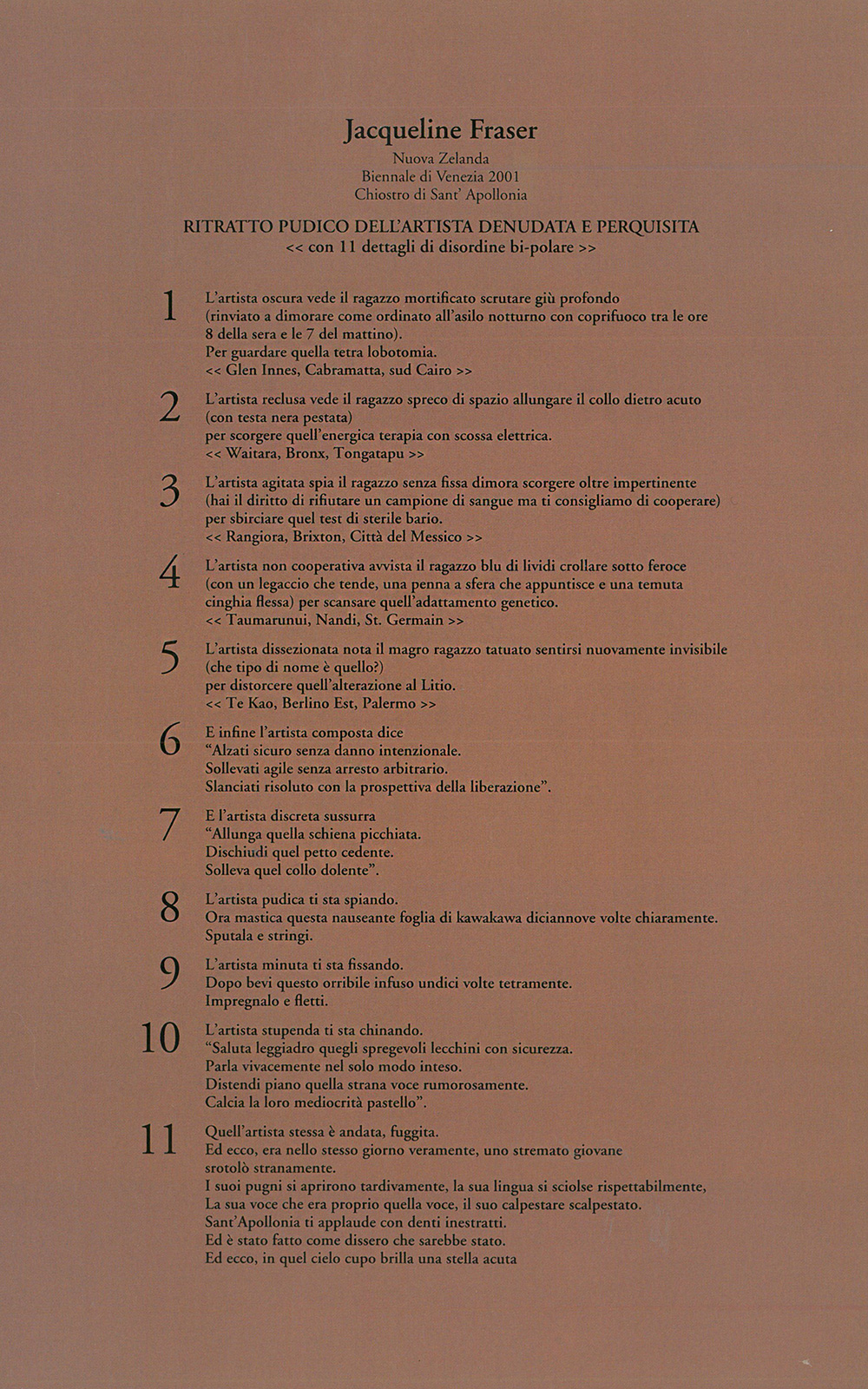
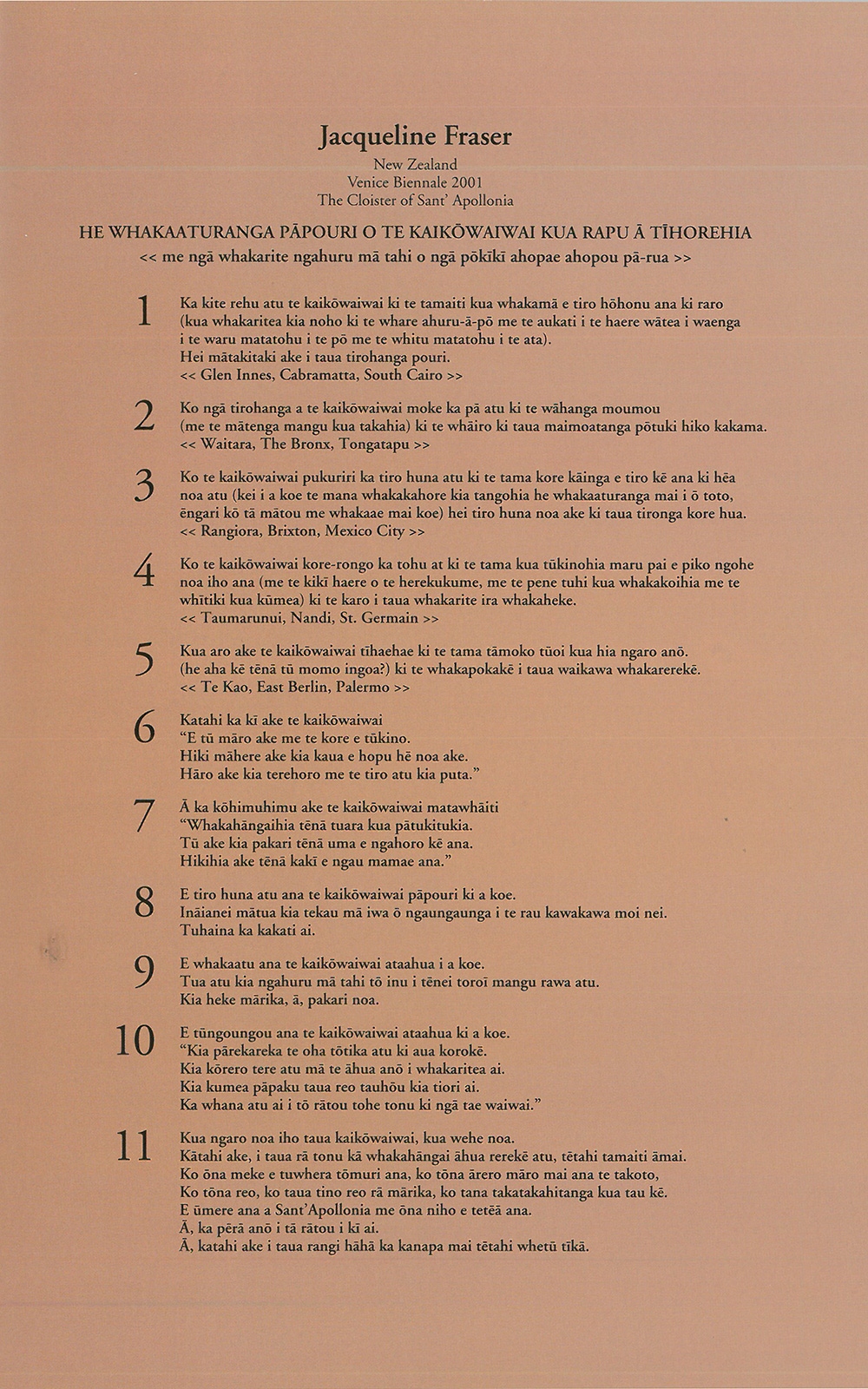
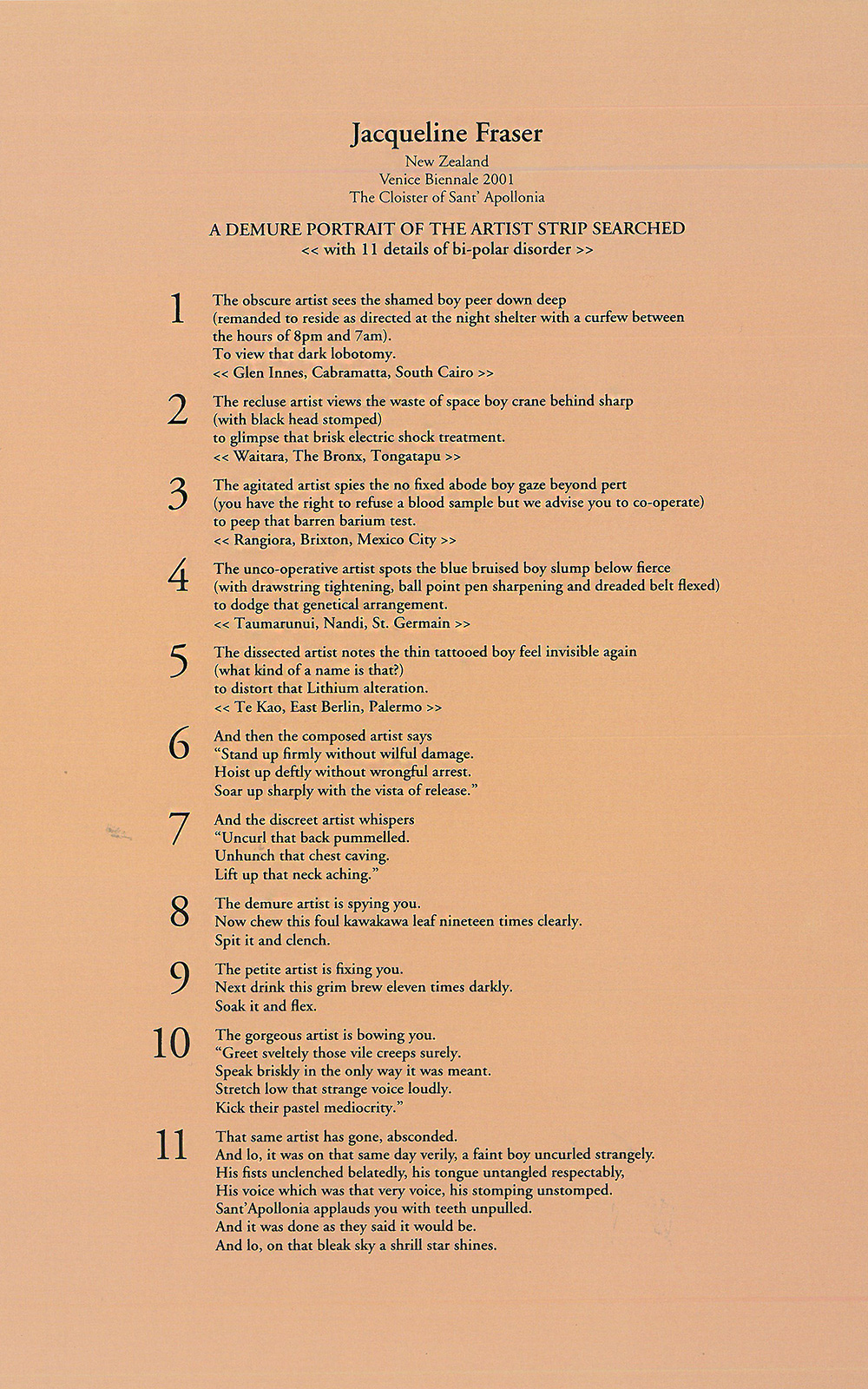

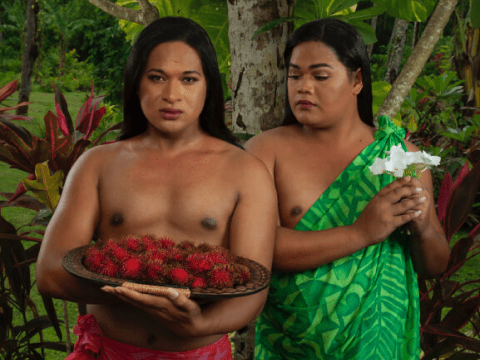
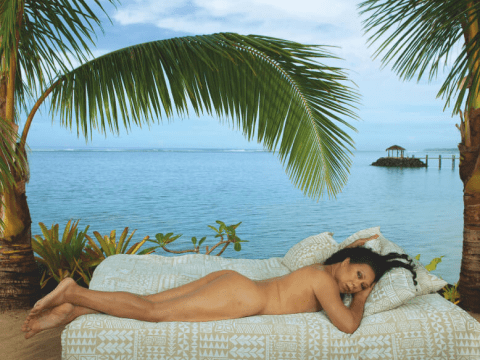
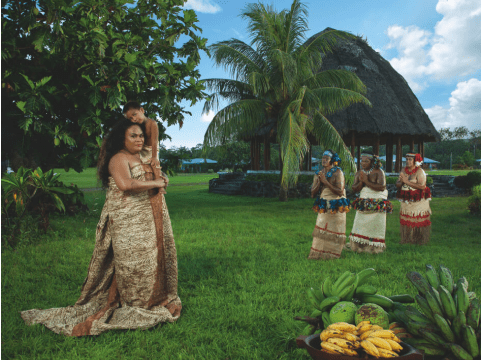
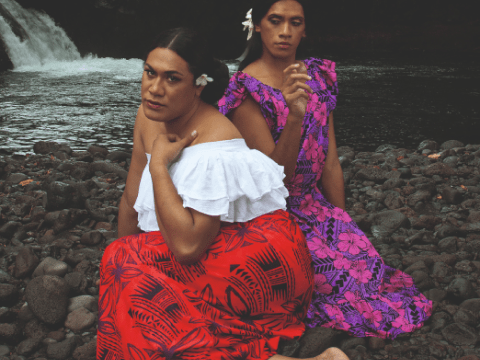
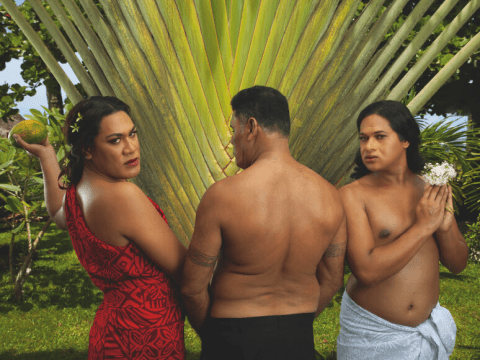
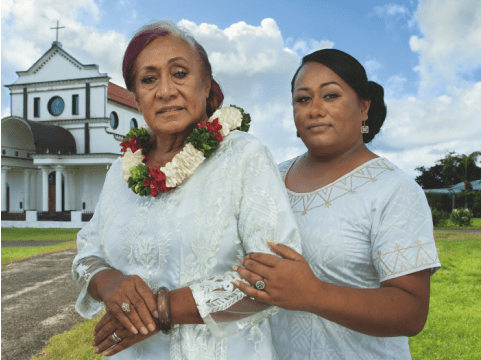
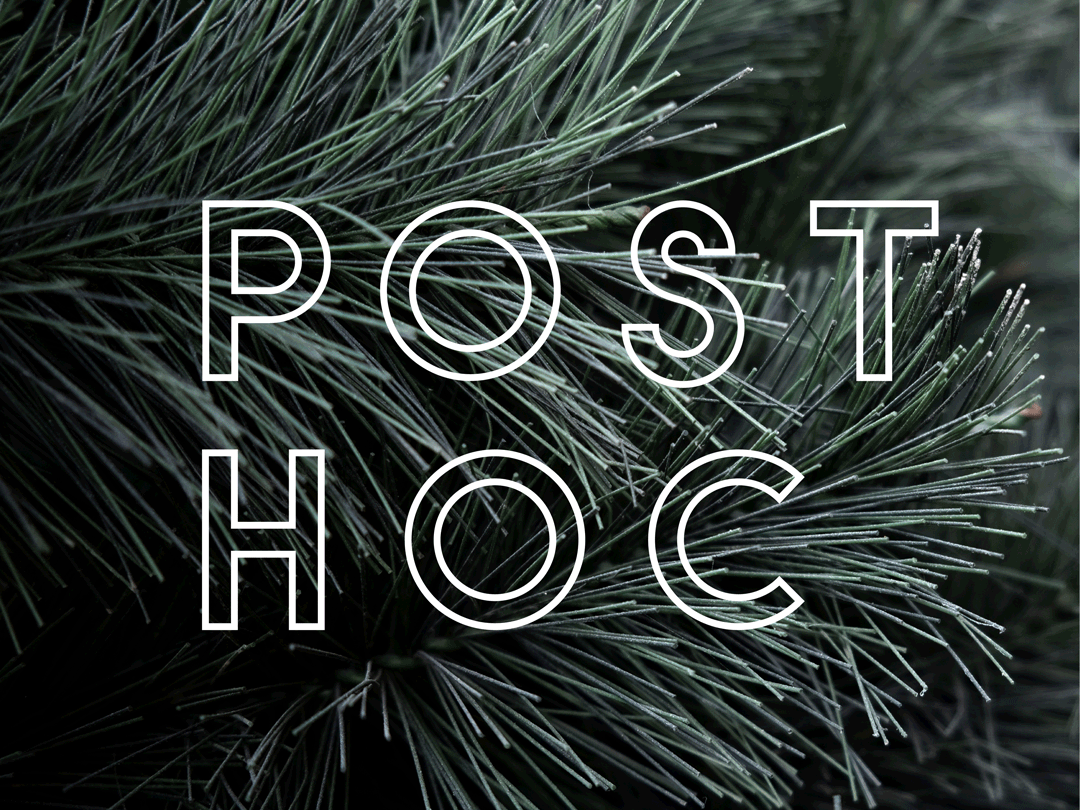
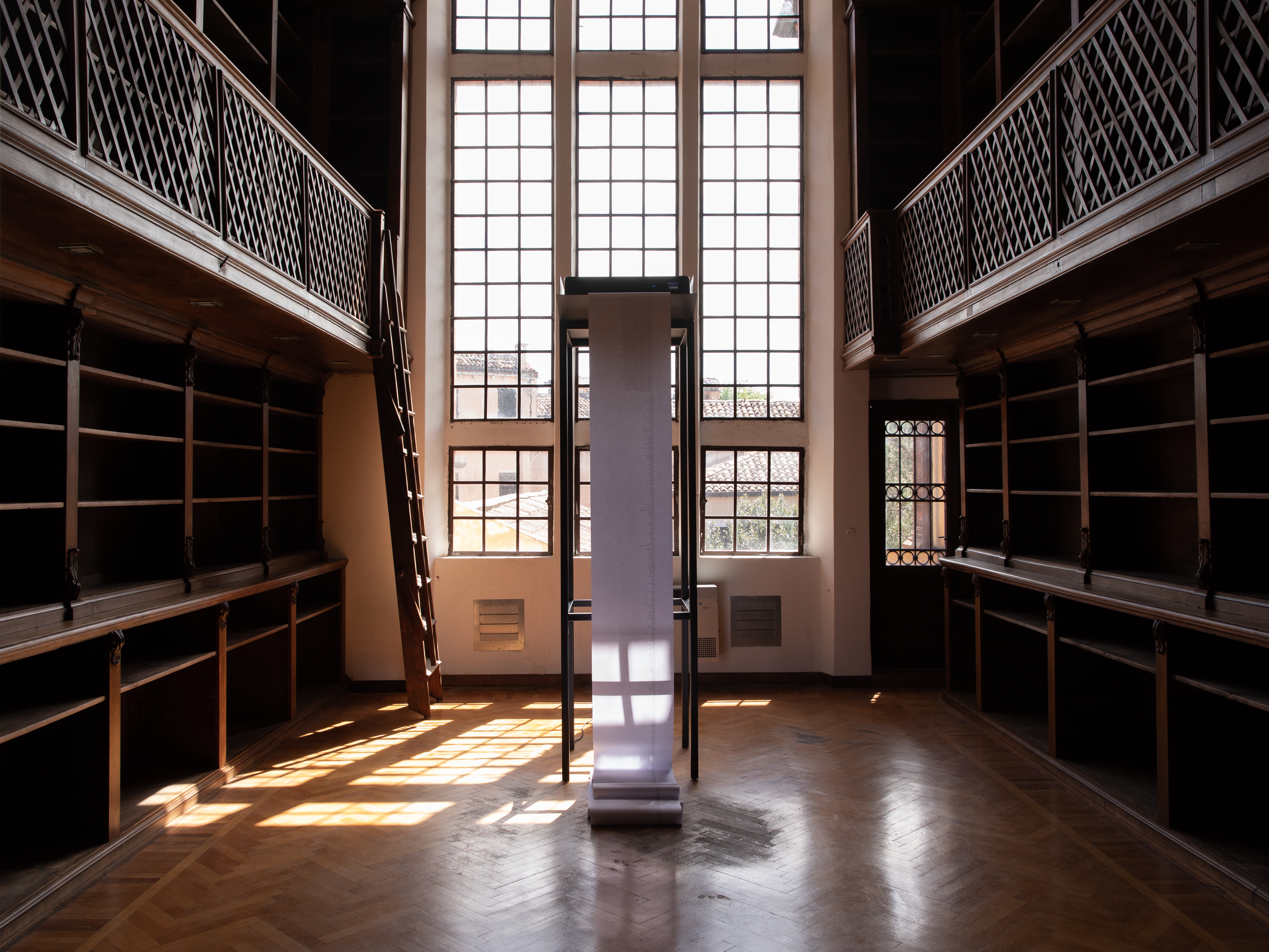
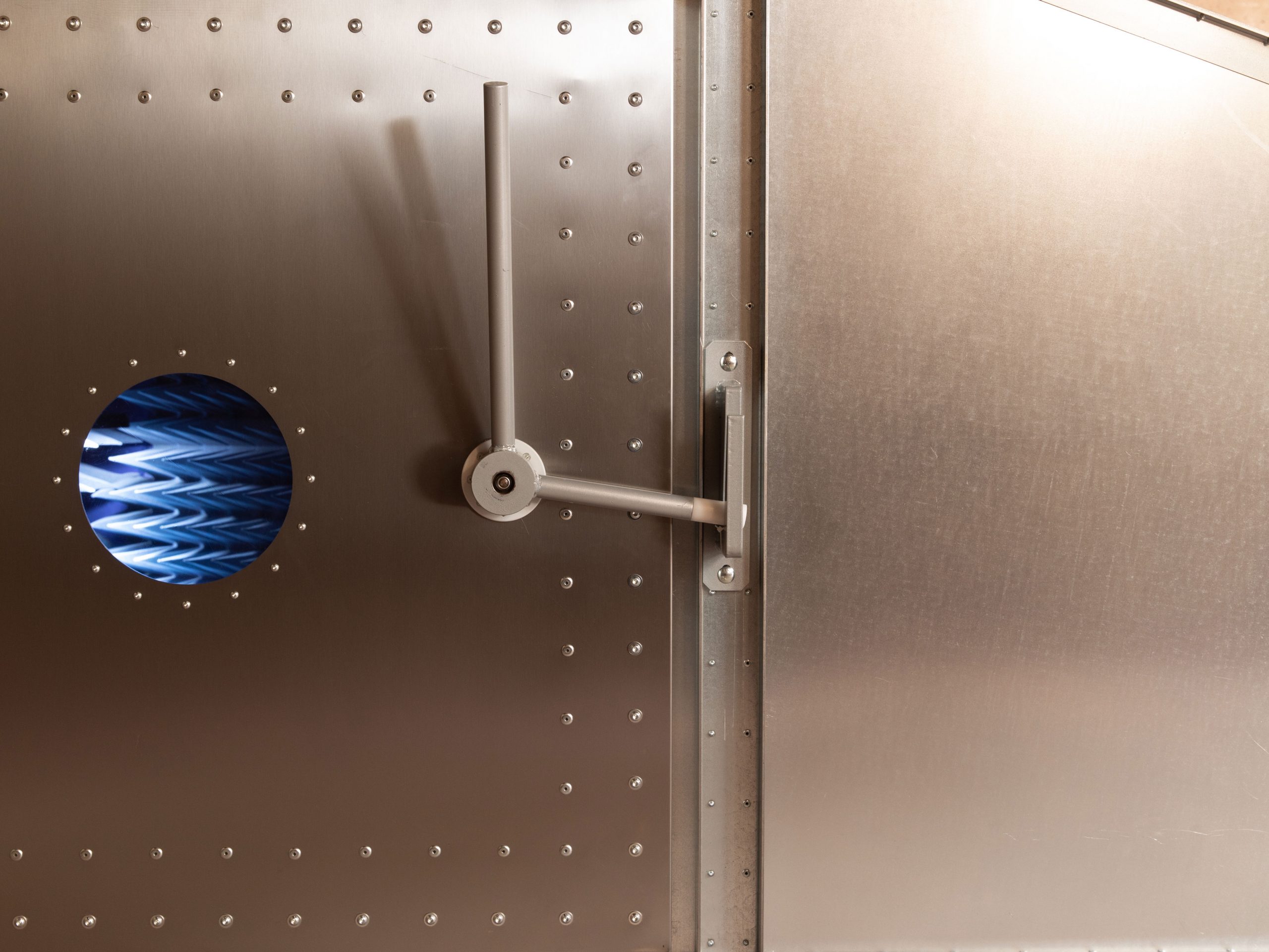

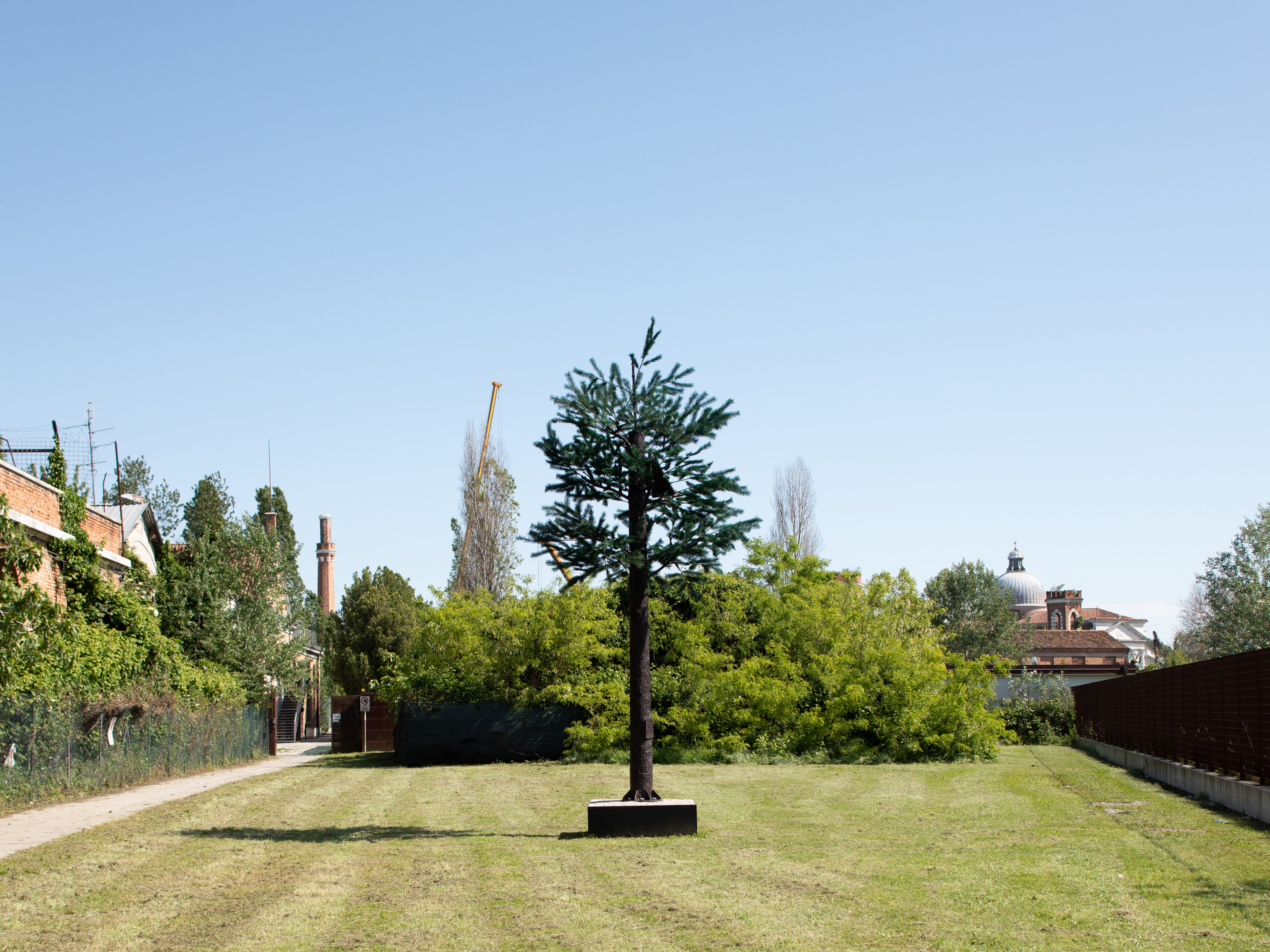
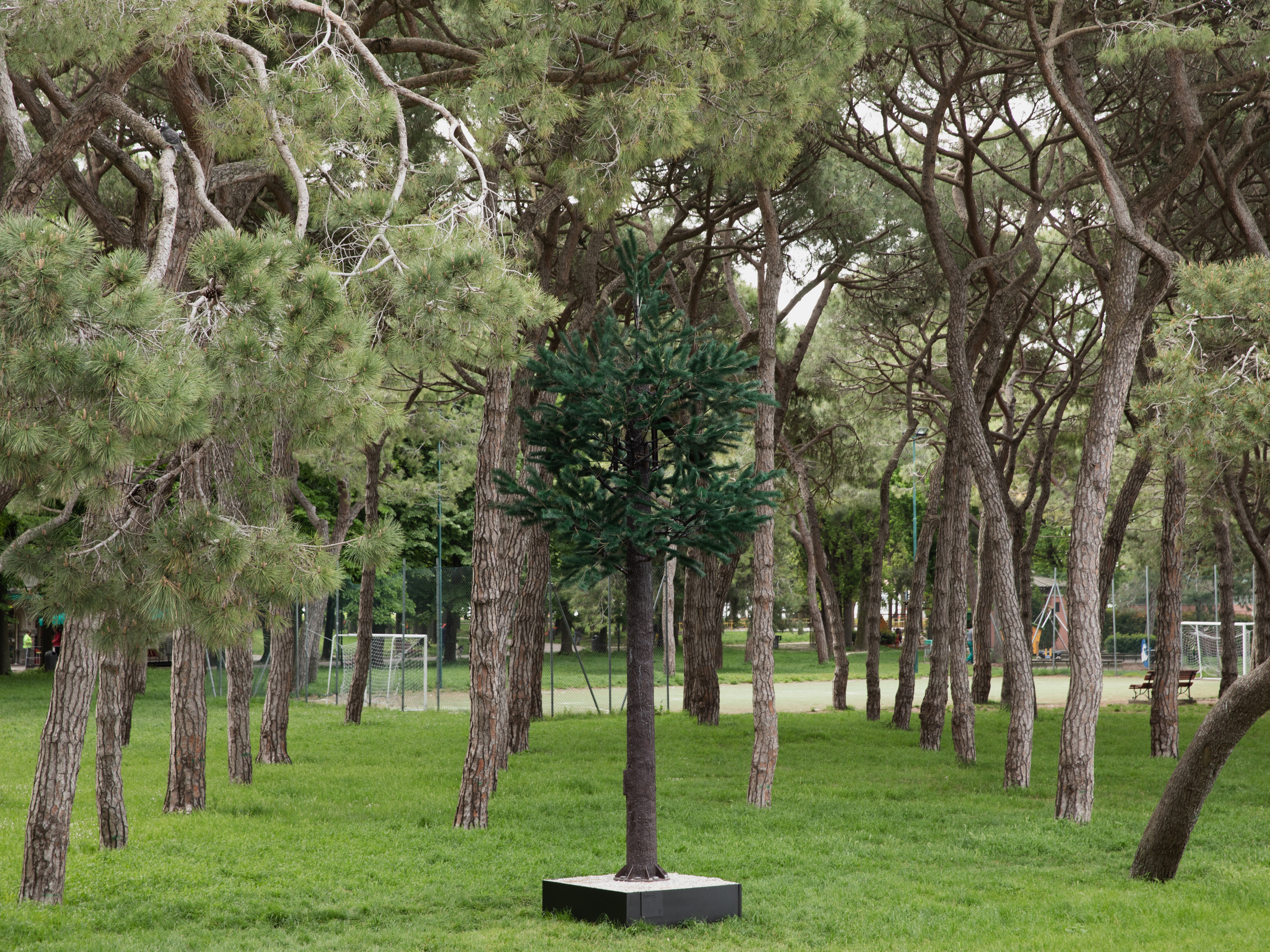
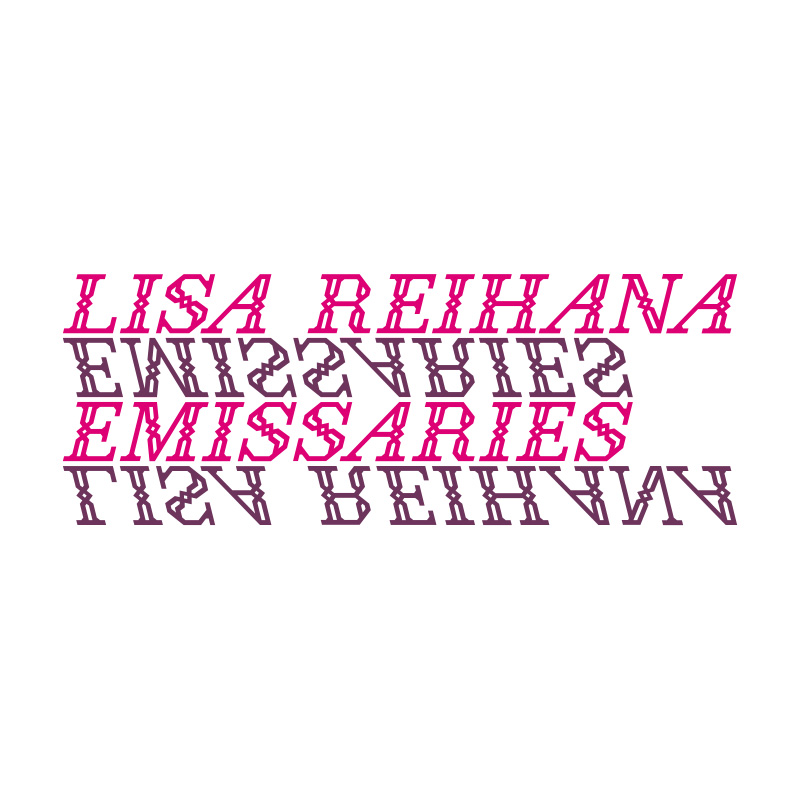
![“in Pursuit of Venus [infected]”, 2015–17, “Lisa Reihana: Emissaries”, Biennale Arte 2017. Photo: Michael Hall.](https://www.nzatvenice.com/wp-content/uploads/2017/12/5.jpg)


![Lisa Reihana, detail “in Pursuit of Venus [infected]”, 2015–17, Ultra HD video, colour, sound, 64 min. Image courtesy of the artist.](https://www.nzatvenice.com/wp-content/uploads/2017/12/3.jpg)
![Lisa Reihana, detail “in Pursuit of Venus [infected]”, 2015–17, Ultra HD video, colour, sound, 64 min. Image courtesy of the artist.](https://www.nzatvenice.com/wp-content/uploads/2017/12/2.jpg)
